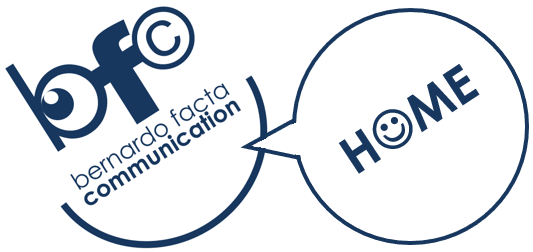TRAINING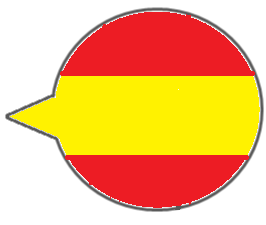

COURSES
Born in an education environment (a family where everybody was a teacher, trainer, professor, or so) our life is linked to this marvelous field since the beginning, a seed that we water with daily effort to continue making way: WE CAME TO THIS WORLD TO LEARN
TRAINING: WHAT FOR?
Some studies say that every penny invested in Training produces 30 of them in return. In an organization, and also in individuals, the effects are like the leaven in the bread: Always Growth!
We create, develop, and deliver courses, thematic areas, practical workshops, career plans, didactic modules and specific training units in fields as diverse as art, communication, leadership or sales. And our trainees are normally so happy with their success!
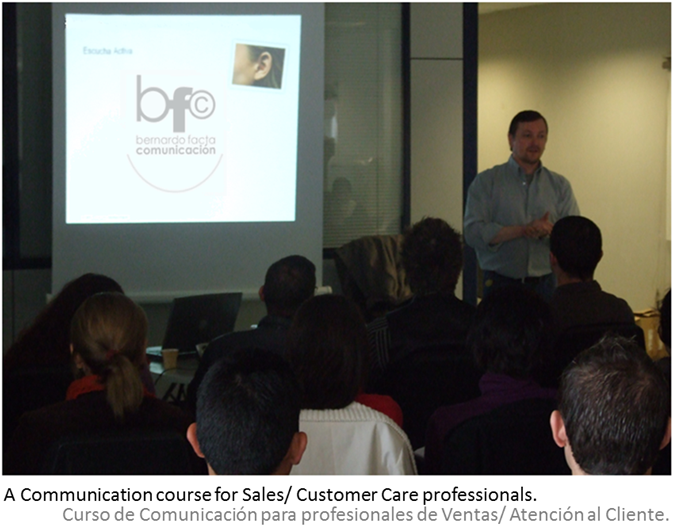
LEVELS: scientific, academic, professional, artistic…
FIELDS: communication, training, applied psychology, coaching, sales, leadership, art…
MODULES (EXAMPLE): advanced sales strategies, motivation for leaders, emotional intelligence for conflict solving, NLP and coaching, etc.
COGNIZANCE
Awareness. Knowledge management to grow. To be conscious about the permanent responsibility of proving useful to our society entails the need of coping with information, practical and theoretical perception and comprehension, cognition, understanding, mastery… Knowledge is power: LET’S KEEP GROWING!
KNOWIN’ TO WIN
So quoted Sung Tzu said some 26 centuries ago that ‘the more you know your enemy, the better you can beat them’.
We think that knowledge can also prove so useful in friendly environments!

BUY NOW & HERE!
ACADEMIC vs SCIENTIFIC LEADERSHIP
DIVING INTO COMMON NEEDS AND STRUCTURAL DIFFERENCES AROUND THE ALWAYS CHALLENGING TASK OF GUIDING BRILLIANCY TOWARDS BEST SUCCESS…![]()
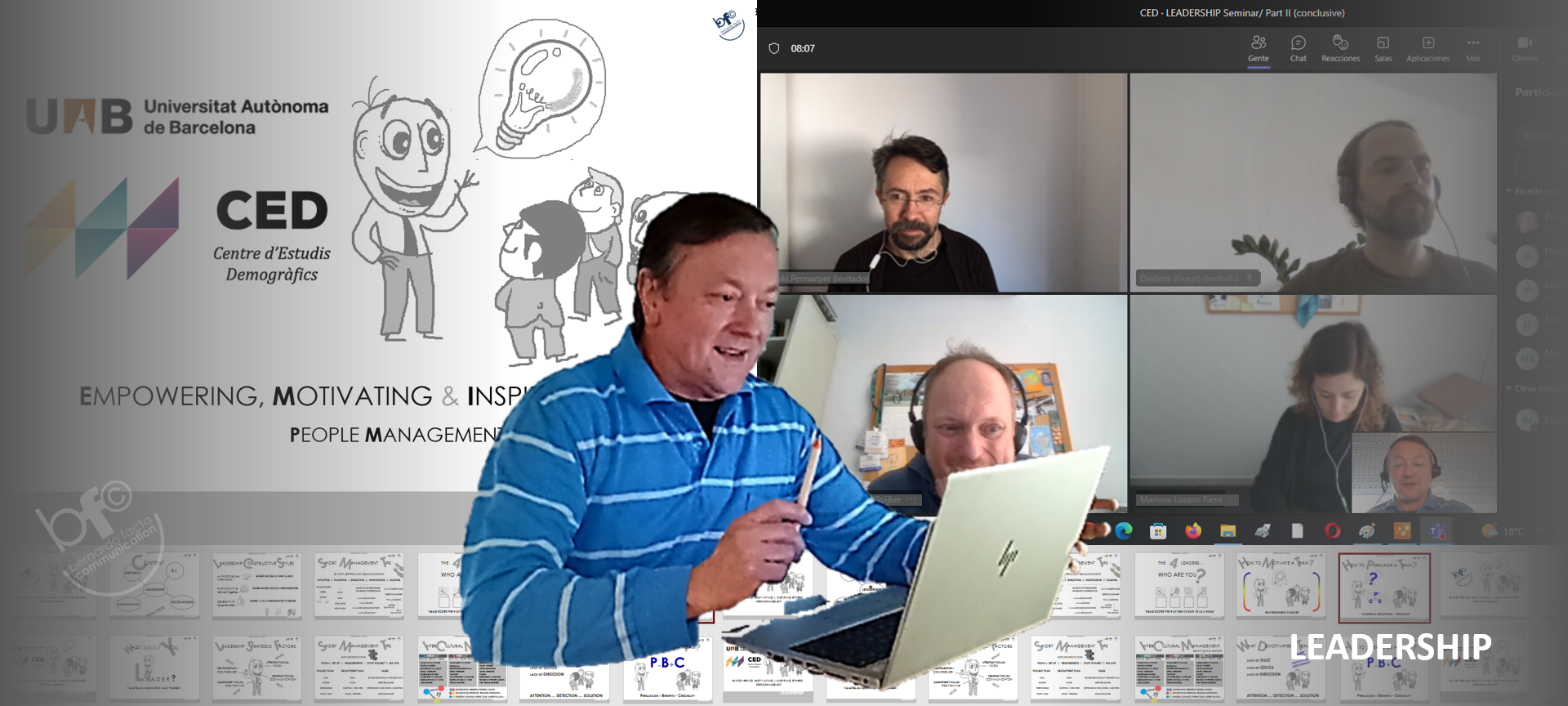
Lot of growth and shared best practices + experience together with Leaders from CED (Centre d’Estudis Demogràfics) and UAB (Universitat Autònoma de Barcelona) in a support Program that includes variety of subjects around effective + successful Leadership/ People Management.
‘EMPOWERING, MOTIVATING & INSPIRING’ as key side of constructive Leadership were the ‘moto-words’ and concepts from which to move this initial Seminar forward, counting on enriching complicity from highly-ranked professionals in both fields (academic and scientific), which responsibility covers European Education programs as well as Research on key fields for our society, alongside two intense sessions full of interaction.
With successive focus on effective Performance or strategic pillars like Training, Mentoring or Coaching in support of Teams’ evolving growth, other key aspects have been covered like e.g. applied Emotional Intelligence, Managerial Program implementation, Time-Management, Multi-Project Leadership and others.
A privilege to get involved in such a challenging experience that is being followed by new seminars in the short future. Academic and Science environments with common scenarios and needs besides their structural differences that enrich the whole thing through diversity of approach angles. Going for more!
‘Til the Next one,
B (Sr)
‘LEADERSHIP IN SCIENCE’: THE SCIENCE OF LEADERSHIP
GUIDING BRILLIANT TALENT TOWARDS THE HIGHEST ACHIEVEMENTS TO IMPROVE OUR WORLD AND LIVES…![]()
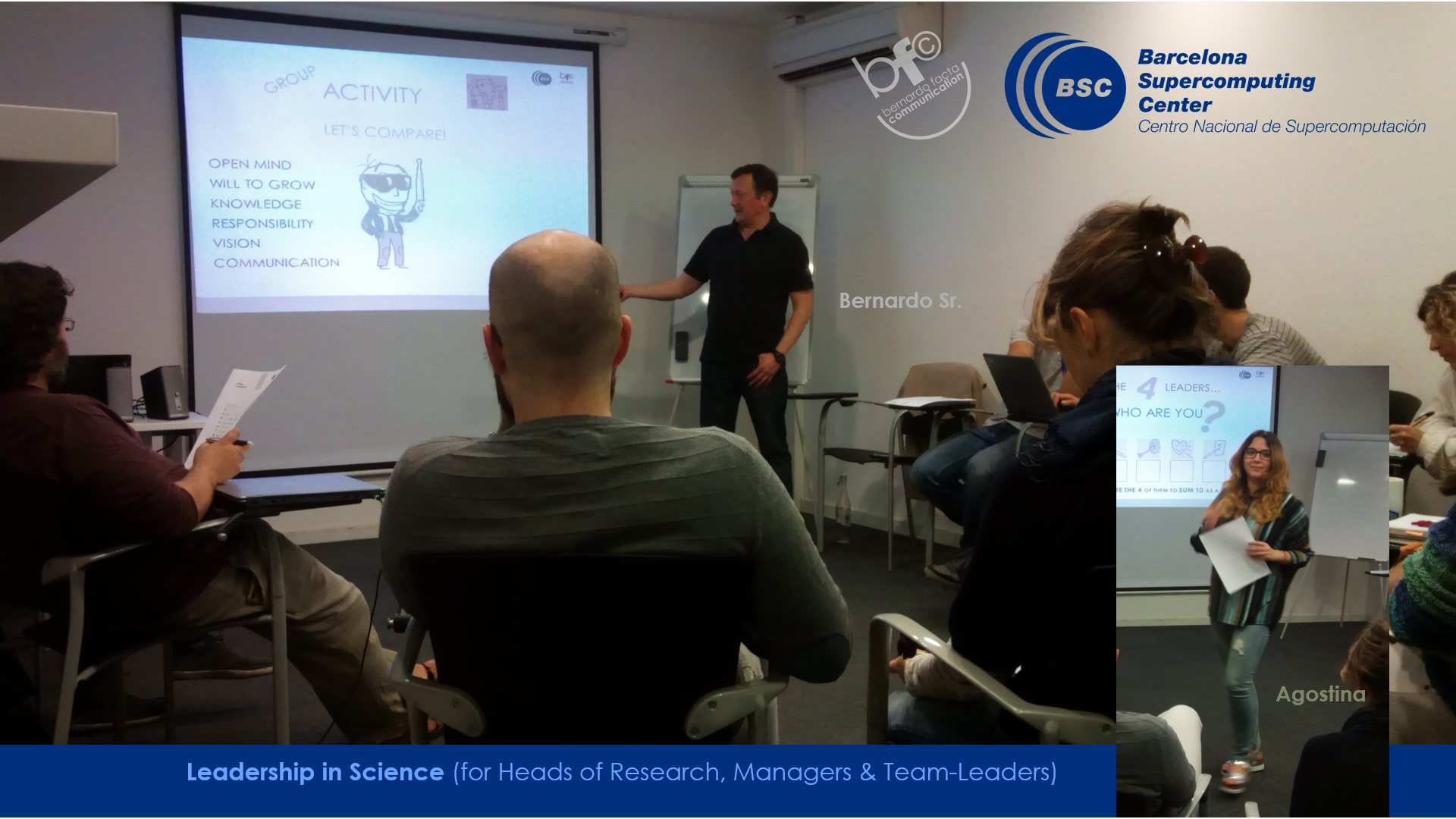
A fantastic growth time shared with BSC brilliant Leaders in varied fields (Quantum Computing, Sciences of Earth, Geophysics and others) around the key side of guiding the greatest researchers and science-talents towards good achievements to improve our world.
Difficult to share knowledge with such evolved minds (multi-Phds majority of them)? By the contrary! Things were going that fast we had to accommodate to such a dynamic rhythm as better as we could, enjoying every second until the end, and learning while teaching in a magical way of synergy that, together with Agostina, we thank a lot.
All of a honor to be there as privileged part of an overall process that strives for continuous improvement, even through ‘trial & mistake’ when needed 😊
‘Til the Next one!
B (Sr)
GROWING SCIENCE 🙂
WELCOMING CED THE BEST POSSIBLE WAY![]()

‘No second chance for a first impression’, Marshall McLuhan said, and ours at CED/ Centre d’Estudis Demogràfics in Bellaterrra (Barcelona) has been mutually outstanding.
A week-long seminar on ‘How to Publish Scientific Articles’ let us enjoy the privilege of sharing time and knowledge with brilliant minds: their Docs (PhD) and Pre-Docs wanting to break barriers to discover the next best future for humankind, beginning by the present.
And the present’s been a rich, collaborative, synergic work together, with scientists from 8 different nationalities bonding behind the idea of taking maximum advantage from this opportunity to approach the hyper-exigent world of science journals and their huge filters + requirements to publish (only the most relevant) science papers.
Fortunately, the whole experience ended in ‘full success’, with marvelous feedback from all of the Attendees and good plans to extend our relationship in the coming times.
bf© is more than happy with CED ‘arrival’ that enriches the list of our usual partners in the science world (like mighty BSC e.g., and others in different fields), ready to prove useful in the common path of growth in knowledge and science.
‘Til the Next one!
B (Sr)
HYPNO-TRAINING (Advanced Training Skills)
THE SUBLIMINAL POWER OF (TRAINERS’) COMMUNICATION TO ENRICH LEARNING EXPERIENCES![]()
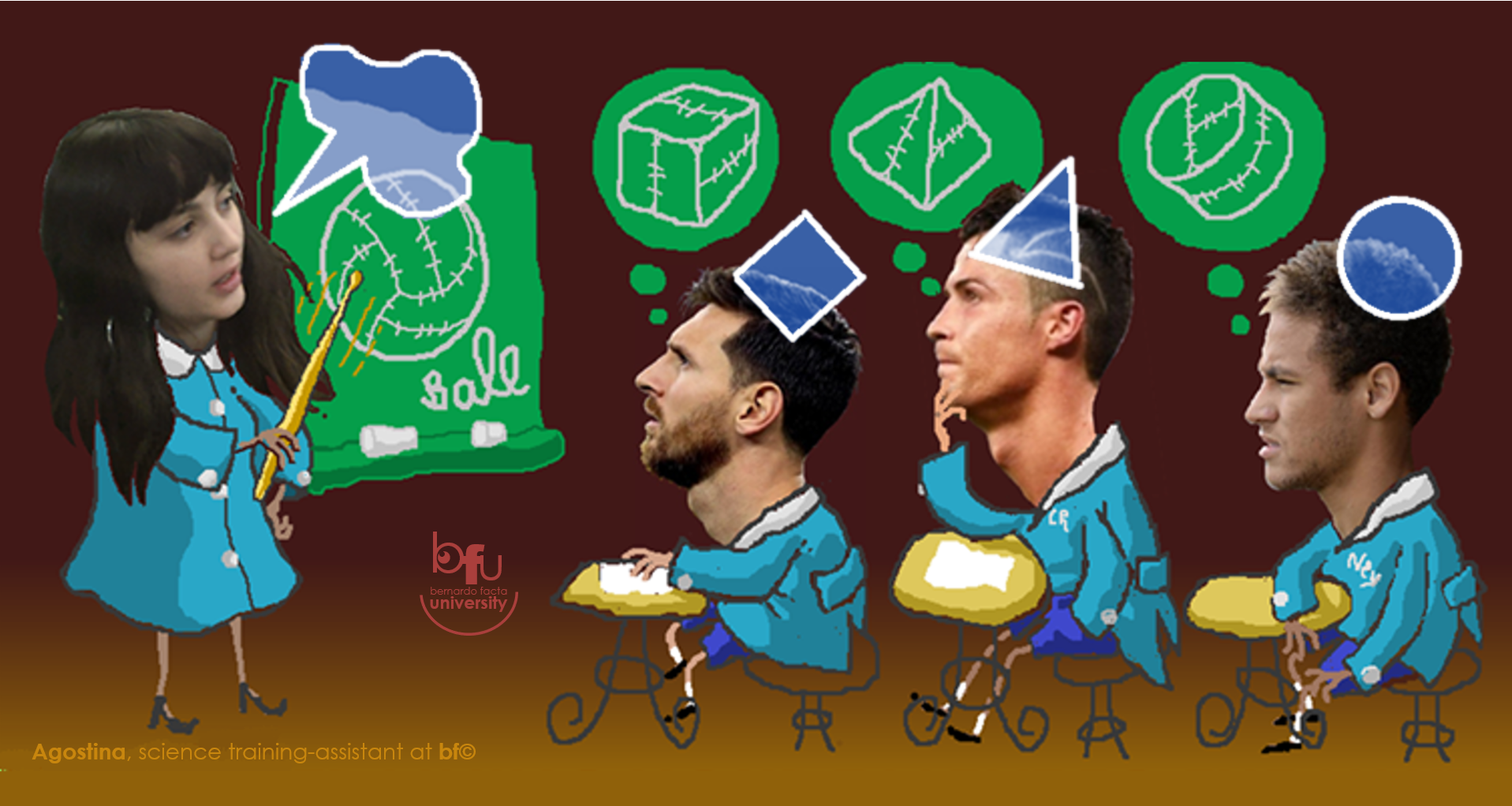
‘Trance’ is, in hypnotic jargon, a different state of consciousness respect to the usual one when we are awake, doing our daily things in life. Wide concept, indeed.
99% of humans run through such type of state just by going to sleep at night and getting up the following morning: when we’re no longer ‘completely’ awake, still not ‘completely’ asleep, then we’re in an intermediate state of ‘trance’.
Ericksonian hypnosis takes advantage of the huge potential in these states to access inner dimensions in order to solve barriers, cure traumas, etc. In other words, the ‘trance’ state is an ideal scenario to act on our improvable areas, specially the ones hidden behind subconscious shields that keep them ‘safe’ there, impeding us to reach earlier/easier our goals.
CAN WE INDUCE STUDENTS/ATTENDEES TO A TRAINING SESSION INTO ‘TRANCE’?
& following this question: what for?
Sure first reply: ‘Yes’. Probable second: ‘to raise intensity in their assimilation + retention, to better help them focus profit towards their individual goals-to-achieve, etc.’
And: will they levitate + fly into the training-room or class-room? Deceiving reply: nope 😊
According to masters John Grinder and Richard Bandler, creators of the mighty NLP, hypnosis improves exponentially communication benefits, rendering reception richer and emission more intense and effective. Well, nice to try this for education purposes, I suggest.
STORY-TELLING SKILLS, A PLEASANT FIRST STAGE…
A nice story told by a talented speaker will surely captivate audiences, both at the theatre and inside a class-room. Every time we listen to stories, our inner mechanisms enter a certain kind of ‘trance’ state by evoking childhood, when being told a story meant to get entertained and sometimes even experience diverse emotions.
A strategically chosen story (usually linked to them, their purposes and the subject of the class/session) will put them into your pocket, dear educator 😊
FASCINATION/SUGGESTION, HYPNOTIC TRICK…
Once them pleasantly paying attention, we can play with their different perception channels: conscious and sub(un)conscious, by emitting in specific ways that activate them at our will.
To FASCINATE them (make them punctually concentrate their conscious attention) we put emphasis on a part of our speech, that we emitt with a certain pattern of voicetone+rhythm, choosing appropriate words to remark the attention-call. This pattern will be anyway the usual one alongside our emission.
To SUGGEST a key hidden message (always activating something beneficial to them in their mechanisms of assimilation) we just slightly vary voicetone+rhythm only during the part of the speech that contains the message to send to their subconscious dimension, the most powerful by far, and responsible to push them (unadvertedly) to what we want them to do or experience afterwards.
NEUTRAL (UNDEFINED) LANGUAGE, A HUGE BOOSTER TO THEIR PERCEPTION INTENSITY…
By using expressions like ‘…to get this that you want…’ we reach them more deeply, more individually than if we define other way (e.g. ‘…to achieve professional success…’) as the neutrality of the ‘this’ in the example accomodates to whatever every single one of them is really wanting to get or achieve.
This way, they feel we’re really connected to their inner, specific goals, and will raise their interest and attention in accordance.
At the same time, the sole fact of repeatedly mentioning their goal as achievable (eliciting the positive result they’re always wanting) is a hypnotic principle itself 😊
REFRAMING ANY STUDENT/ATTENDEE’s EVENTUAL SETBACK OR PROBLEM INTO A POSITIVE…
Besides accepting such type of states or sensations (eventual difficulty to comprehend something, worry about own capacity to take proper advantage of the managed stuff in class, doubts, etc.) is good to change emphasis ‘from problem to solution’, ‘from fear to action towards advancement’, etc.
If an attendee says they find hard to comprehend something (e.g.) showing some early sign of frustration or high worry, good to tell them it’s normal to find obstacles in our way towards success, and so good to beat them by acceptance, patience and some extra-effort to celebrate later on that the goal is much closer.
LEADING QUESTIONS…
Ultimate ability allowing the trainer/teacher to influence audience through this magnificent way of soft persuasion:
‘- Would it be nice to give our best on this in order to succeed easier and earlier? …let’s go!’
‘- Can we imagine how much we’ll stand out by using this coming key-strategy? …let’s see!’
Through this type of questions we’re subconsciously leading them to act in determined way by the simulus of an appealling compensation, avoiding to give direct orders or indications, and getting them into action because their own will and decision in the end.
Subliminal ways of raising profit from a session to the audience (deeper assimilation, higher potential to apply in the future the managed stuff, etc.) will always enrich the whole experience and grant higher success afterwards. ‘- Would it be good to give a try?’ 😊
Hope it can prove useful, advanced Colleagues!
‘Til the Next one,
B (Sr)
‘DON’T KNOW!’
MANAGING EVENTUAL IGNORANCE DURING A CLASS OR SESSION![]()

Leaving aside the obviousness of an Educator needing to KNOW, it’s perfectly possible that this person knows only a part of the ‘whole knowledge’ (whatever this concept could be 😊), so…
What if we trainers-teachers-professors-etc. are suddenly asked something we don’t have idea about? Yes, the ‘asker’ is fully trusting our oracle-kind, infinite wisdom, and the rest of the class or session team-mates are nailing their gaze on us, waiting for the ‘perfect answer’ …what a moment!
Well, what to do?
I’d kindly suggest (umpteenth) to act in whatever way we feel correct, always in their benefit.
Much more important than our ‘aura’ of perfect knowers, is the fact we are there to manage knowledge for their growth + advancement. In addition, we can be brilliant without arriving to oracle level 😊
My usual reaction in such type of situations is full honesty: ‘- Fantastic question! No idea.’ …and then look for the most appropriate solution, as e.g. ‘- Somebody wanting to tell us?’ (active implication of the rest of class/session), or a responsible engagement by ‘- I’ll carefully look for this & be back with best reply a.s.a.p.’ …’- Thanks for the question!’ will work almost always, as the question has acted as a ‘movilizer’, probably so helpful to enrich and improve the general thing.
Only delicate conditioning point should be the identification between educator and last provider of the experience (brand, company, etc. in the business case), what by ellipsis can mean ‘the brand doesn’t know’ if this happens to their trainer/facilitator. Just a subliminal perception in cases, even if always worthy of attention.
A brilliant colleague told me about her solving these situations by alternatives like: ‘- On this I have to consult the brand, as we’re still defining some aspects…’ or ‘- This is a bit complicated and out of the scope of our session today’, etc.
The ‘strategic delay’ pays frequent good results, being it proper or invented 😊, and a good formula for it is ‘- Nice you’re advancing that much this program! We go for it later, for sure…’ Of course we should run towards the expected reply during the next break or short after the session’s end in order to pass the respective info to the asker (and eventually rest of attendees) in reasonable time, by m@il or similar.
As always in communication, the true success on getting out of uncomfortable situations (in general, including ‘not to know’) relies on our natural attitude to cope with the thing, showing at every moment a confident smile and the sure sensation we’re having the reigns and moving the thing forward the most convenient-to-them way.
So: intense preparation before, natural + attentive attitude during, responsible check + submission after. Hope it helps!
‘Til the Next one,
B (Sr)
MIND-APPROACH DISCLOSURE
LEARNING TO LEARN FROM OUR PERCEPTION’ CONSCIOUS CONTROL![]()
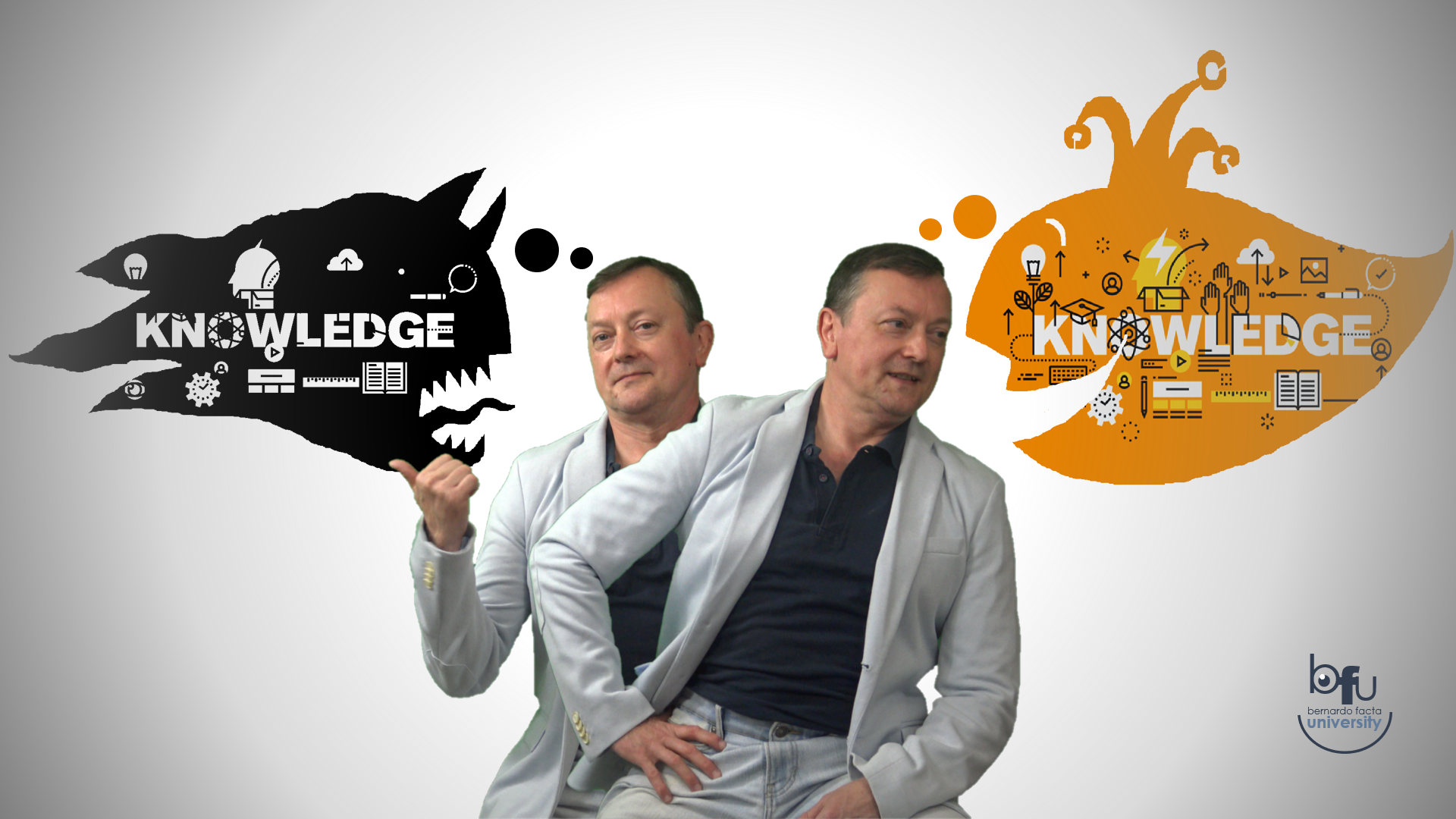
We can LEARN MORE and BETTER if we work our way of approaching Learning → working PREDISPOSITION in relation to MOTIVATION and managing intermediate processes of Mental control over the Rational and Emotional phases. Go for it?
LEARNING TO LEARN
We need constant learning to grow and project ourselves in life, that is, to fulfill our role as humans. It is evident that the more and better we do it (learn = grow) the sooner and more intensely we will enjoy the benefits.
How many times do we feel boredom or even rejection of a topic, subject or area that we necessarily have to address / learn? With absolute certainty and for multiple reasons this didactic process will weigh us much more than it should. As if a moving vehicle must travel a bumpy ledge instead of a highway, to get to the same place (our growth having incorporated knowledge).
The ‘learning to learn’ will help us to change lanes: better the highway than the ledge! EMOTIONAL SELF-AWARENESS
It is phase 1 in overcoming blocks (of various kinds) from Emotional Intelligence, and applied to Learning, it means analyzing WHY my future learning unit bothers me (it distresses, cows, bores in advance, causes rejection, etc.) of such way. Unconsciously this rejection will minimize my potential to learn in this didactic exercise: my barriers will slow down and add difficulty to the vehicle that would like a great and expedited highway.
Rationalizing (making conscious) the submerged is then a good first step. Let’s follow the Unlock strategy. And here the options are varied …
Perceptual REVERSAL can help. The same one that invites us to approach everything from a positive mood instead of the usual negative (defensive-evolutionary): instead of asking ourselves ‘how heavy and unbearable can such a class, course or area be?’ We could convince ourselves of its positive capacity to surprise us for good. Thus: ‘What benefits, still unknown to me, can learning with enthusiasm this next class or course bring me?’… ‘What if I am very wrong and in reality it is something that will contribute so much to my growth and success?’
From the orthodox motivation, it would be to transform ‘doing what I like’ into ‘liking what I do’, which in addition to being wise helps to suffer less and make time pass faster 😊
RETROSPECTION will show us from objective memory that many things that we approach in the classroom or the room from a heavy conviction that they would be ‘inedible’ then proved more than possible (and even pleasant) for us, that see how much easier or viable there were many of their aspects that seemed unapproachable at the moment of understanding and assimilating them.
POSITIVE PRE-VISUALIZATION will do a lot in our favor too: imagine ourselves dedicated to understanding with JOY as much as we can, thus OPENING THE MIND as much as possible to better absorb the knowledge that is imparted to us.
A lot of MOTIVATED ATTENTION during the necessary theoretical phases and WILL + PATIENCE during the practices, in which we can even (as much as necessary) learn from Error, as it happens in science, it is usually a good way to face growth from ‘that’ class or ‘that’ course that we feared so much.
THE ANALYTICAL APPROACH …
He had to arrive sooner or later! Well start by answering questions like:
Does the next teaching unit that I face make sense and is it relevant? Advice: answer from the CONTRIBUTIONS that I can make (be here as exhaustive as possible) rather than from how much I LIKE IT
Is it the best way to get or get closer to what I want? Healthy question, since it will imply making sure of ‘what’ we want, and the goal always paves the way. If we see that there are other better options, attending that class or course will be ruled out (free!).
Am I aware of how much my own ATTITUDE to this future process will mark the degree of benefit I get from it? In other words, if I am throwing rocks my own way, I will move slowly and spend unnecessary energy throwing rocks + avoiding them later. Good to be aware that our way of SEEING and FACING future learning can pave the way and make it look quite like the ‘highway’ of the initial metaphor.
If pleasure is the best ally of learning, let us seek to enjoy this future challenge from before tackling it, laughing at the small difficulties that it may bring together with useful and good knowledge … laughing even at ourselves and our previous perspective based on a fear almost always irrational.
‘What does not kill makes you fat’ they say in many cultures to highlight how much stronger we will be with what comes to us, if we know how to find the positive point.
‘Til the Next one! … With sincere wishes for a lot of Growth from Learning 😊
B (Sr)
KALEIDO-TRAINING 🙂
THE ‘PERFECT DIDACT’ (UTOPIAN) CONCEPT, MADE OF MULTIPLICITY![]()

How many faces does the ‘diamond trainer’ have to show in order to become a perfect educator?
KAL (‘beautiful’ in Greek) and EIDOS (‘form’ in the same language) can be referring together to a Gestalt type of form: the conceptual shape of something, as e.g. the capacity to train in an outstanding, almost perfect way.
KALEIDOSCOPIC, instead, appeals to complexity: multicolored patterns or multifaceted elements according to the orthodox (dictionary) definition.
Bonding both approaches, we will accept that to become an outstanding professional in the field of Training (Business, Academic, Professional types of education and some ‘etceteras’) some nice set of diverse factors (complexity) should integrate the top formula (beautiful form).
Let’s go with some ‘facets’ in search of the precious diamond of the almost-perfect Trainer. ![]()
PERSON & PERSONALITY
- ‘To BE’. Possession of an own personality developed on the clarity of ideas and mature self-knowledge. Awareness of one’s own potential and unique characteristics as a motor of personal development towards the concretion in maturation and capacity of projection towards the environment. Originality based solidly on respect for one’s own essential values and characteristics.
- VOCATION: deep call to the educational task as a germ of own growth and (above all) of others with whom work and life experience will be shared. Essential motivation, intrinsic to the person and to whose development they will collaborate from the light thrown to each choice / decision. Genuine inclination towards defined goals.
- EVOLVING ATTITUDE: continuous growth approach based on the combination of persistence in the identification of goals along with adaptive flexibility to make the best use of each circumstance, including unexpected ones, in order to advance and progress from the use of talents and resources on which we count.
- EMPATHETIC GENEROSITY: natural inclination to ‘give oneself from the best of oneself’ as a stimulus and channel for the growth of others, to whom the necessary time and energy is first dedicated to understand them (needs, possibilities, etc.) and then the consequent didactic/ educational action strategically designed in response to what was detected in the previous comprehensive-knowledge phase.
- PERSISTENCE/ EFFORT. Emotional-intelligent capacity to persist in a chosen path of action/ growth until the concrete fruits (goal) are achieved, whether it be a conclusion or a stage in a major itinerary. Resilience to face and resist even eventual setbacks, from the strong conviction of the convenience of achieving the objectives.

TALENT(s) & COMMUNICATION
- MAIN SKILLS & ABILITIES (general frame). Broad concept that usually refers to outstanding (in positive) characteristics of a human being in the varied fields of human existence, including art, sport, science, and any other field in which a marked capacity has proven exceptional. An educator will better do their work if letting inner special capacities flow, at the same time proving ‘unique’ to the audience from the evidence of the own particular abilities (thus avoiding the boring ‘automatization’ around too frequent, extremely repeated ways of dealing with a class or session).
- INTELLIGENCE MAP: both in the Intellectual and Emotional fields, ‘Intelligence’ is a concept that deserves deep attention, as a key factor in learning and other evolutive tasks. IQ (rational, lets say) covers variety of fields as e.g. mathematics, literature, music, kinetics, ontological consciousness, interpersonal skills, natural awareness, etc., as well as EQ (emotional) works around factors like self-control, enthusiastic tendency, capacity to self-motivate, persistence, etc. Both areas can define an educator’s ‘map’ that will for sure condition and shape their approach to the educative experience.
- CREATIVITY: marked ability to produce varied alternative solutions to identified needs, and to offer them fluidly (many), flexibly (diversity of applicable ranges), and originally (with evident novelty in them). Improvisation, eventually needed to solve some unexpected barrier during a class or program development, is usually linked to some spontaneous forms of creativity, as well as innovation is conceived as a product of previous creative work having proposed a solid way of improvement to be applied. Every person has creative potential, what is blessing for education at all stages, and it’s a matter of freeing up this capacity even against usual inner blocking barriers around the (wrong) idea of us not being creative.
- EMPATHY. Listening, observance, and perceptive (in general) capacity to cover others’ information (evident, verbal, non-verbal, parallel, subjective, etc.) coming to ourselves, and primary ability to interpret them in terms of interlocutors’ style and need(s) in order to deeply comprehend their main motivations, preferences and requirements, thus easing the task of choosing the + suitable channel/style of interaction.
- SCANNING DEPTH: capacity to perceive the necessary information (environment, audience, situation, etc.) with highest degree of detail, in order to process it for best possible adapted reply, usually in the form of a + convenient approach to an education unit.
- ASSERTIVENESS. Natural ability to express (convey a message, e.g.) the clearest way, proving at the same time kind enough for the interlocutor to accept it and (desirably) to reflect or profit from our emission. In deep relationship with EMPATHY, assertiveness is a usual strategic consequence of the analytical reception that begun an interaction.
- OPENNESS/VERSATILITY: wide range of possibilities in the interaction field for didactic purposes, including adaption to audiences’ characteristics, moods, attitude, needs, etc. From this viewpoint, an educator should be gifted enough to ‘break the ice’ with a cold, hieratic group as well as to calm exaggerations down in front of a very unruly group, with many intermediate ‘grays’ inbetween.
- LEADERSHIP. From the previous point, the capacity to inspire an audience forward in order to reach their goals effectively, by knowing them and their potential + stimulating their strengths to engage and effectively contribute in the experience’ creation (collaborative learning type, at least). Vision, Clarity, Magnetic appeal and other elements will surely help.
- CHARISMA (AURA). A usual consequence of point 1., it’s more than the gifted ‘magics’ that make an actor produce hysterical fanatism in their public. It’s about proving ‘unique’ by playing the own cards (using own talents and characteristics) alongside the integrative interaction with attendees.
- PUBLIC PERSUASION. Capacity to convince groups about the education unit’s approach, and every inner attached element, in order to coherently moving forward until goal-achievement. Own credibility (personal implication, references, etc.) together with solid exposition of benefits to audience whenever following the educator’s suggestion, play usually a huge role in the persuasive success.
- NON-VERBAL + BODY-LANGUAGE MANAGEMENT. Ability to manage the most powerful side of human communication, from both auditive (sound, vocalization, voice-tone and entonation, speed, pace, rhythm, psychological use of silence, etc.) and visual (gestures, sight, postures, physical use of space, eloquent movements, etc.) channels, in order to impact the audience for higher engagement and deeper assimilation, among other attached benefits.

PRACTICAL SKILLS + RESOURCES
- TIME MANAGEMENT. Capacity to conceive in real-time the evolving path of a didactic unit (class, program, practical session, debate, etc.) in which the teacher is involved, in order to strategically manage each lapse of time assigned to successive phases, to reach in the agreed time the expectable goals.
- ORGANIZATION. Ability to structure the educative experience from their practical, developmental phases from a necessary order for inner coherence and solidness in the expectable path (both to grow skills and get results/achieve goals).
- PRACTICAL + TECHNICAL KNOWLEDGE OF TOOLS: solidity in the management of on-site communication from the use of blackboards (eventually) with the usual connotations required so that they are clear and useful (visible, understandable) to the public present in the room. Efficiency in the practical management of technical implements (computer, sound equipment, light pointer, image projector, etc.) and of the related computer programs (presentations, video and music management, virtual commands for the creation of work subgroups in a tele-session, etc.). ‘Murphy loves technology’. It is important to practice prior to the real experience with students / assistants.
- PRACTICAL CONNECTION TO AUDIENCE’S REALITY: necessary knowledge of the environment and fundamental requirements of our audience, in order to offer didactic solutions as practically adapted as possible. The greater the effective knowledge of what is expected from each assistant after the educational experience, the more possibilities there will be to influence these key points during the (theoretical and practical) development until achieving a minimum of effective assimilation and retention from the public.
- CHECKING/TEST. Awareness about the convenience of verifying that the public has assimilated the main aspects of the training with the necessary solidity to apply them in a practical way in the subsequent (real-life) time. Ability to carry out the verification through the most convenient ways in each case (question-answer, test, face-to-face feedback, etc.).

KNOWLEDGE
- EPISTEMOLOGY. Possession of the appropriate and necessary knowledge to didactically cover the area and unit to be managed. Soundness and appropriate sources usually guarantee the ‘quality of knowledge’ required for an effective experience based on reliable information that will be transformed into training.
- STRATEGIC ADAPTION TO GOALS. Ability to direct each aspect of the imparted knowledge (including the irruption of the unexpected before or during a class/ session) to obtain the desired result (objectives effectively achieved). Visualizing the goals permanently (or almost) is usually a factor that easies this constant adherence to the most effective path of achievement.
- MECHANICS + STRATEGIES OF EFFECTIVE LEARNING. Capacity to decide perspectives of approach to the learning phenomena, based on key aspects as e.g. type of audience, necessary knowledge, frame of application, expectations, etc. Being always LEARNING more relevant than TEACHING (still considering both as as indissolubly associated), the strategic ability of the teacher in the general approach to the operation of the unit/ program will significantly influence the use by/ profit from the public side.
- GENETICS: KNOWLEDGE DEVELOPMENT. Capacity to create from scratch unities or didactic programs up to specific requirements, and ‘tailored’ to such identified needs/ frame. Knowledge about knowledge (meta-cognition) as well as appropriate development systems, which usually take into account from epistemology to the practicality of what is created, in order to provide it with the greatest possible effectiveness (and benefit for future audiences).

BONUS
Countless parallel facets would follow, including corporate adherence to the philosophy and principles of the institution within which education happens, among others. The ‘pluses’ in education (an infinite concept itself) would make up a universe of its own, which we will surely deal with in future articles.
On this, and without exhausting the possible angles of approach to the multi-reality of the educator and the training, we hope to have exposed at least a series of elements and clarifying factors that can help make the teaching task more complete and integrated.
‘Integration’ is a keyword in education and for educators. The didactic reality is always contextualized, so each co-existing factor gives it dimension and meaning. From our way of perceiving to that of living, everything that comes up as information to our perception is integrated in context. For example, the first photo in the attached image (top left) and the last photo (bottom right) are exactly the same. If they are perceived differently, it is only because of the different context in each case.
Such as when, as trainers, we find countless contexts in our audiences and addressed knowledge.
‘Til the Next one!
B (Sr)
INNOVATION IN SUPERIOR EDUCATION
HOW TO ADAPT ACADEMIC & ADVANCED-LEVEL LEARNING TO CURRENT TIME’S NEW NEEDS
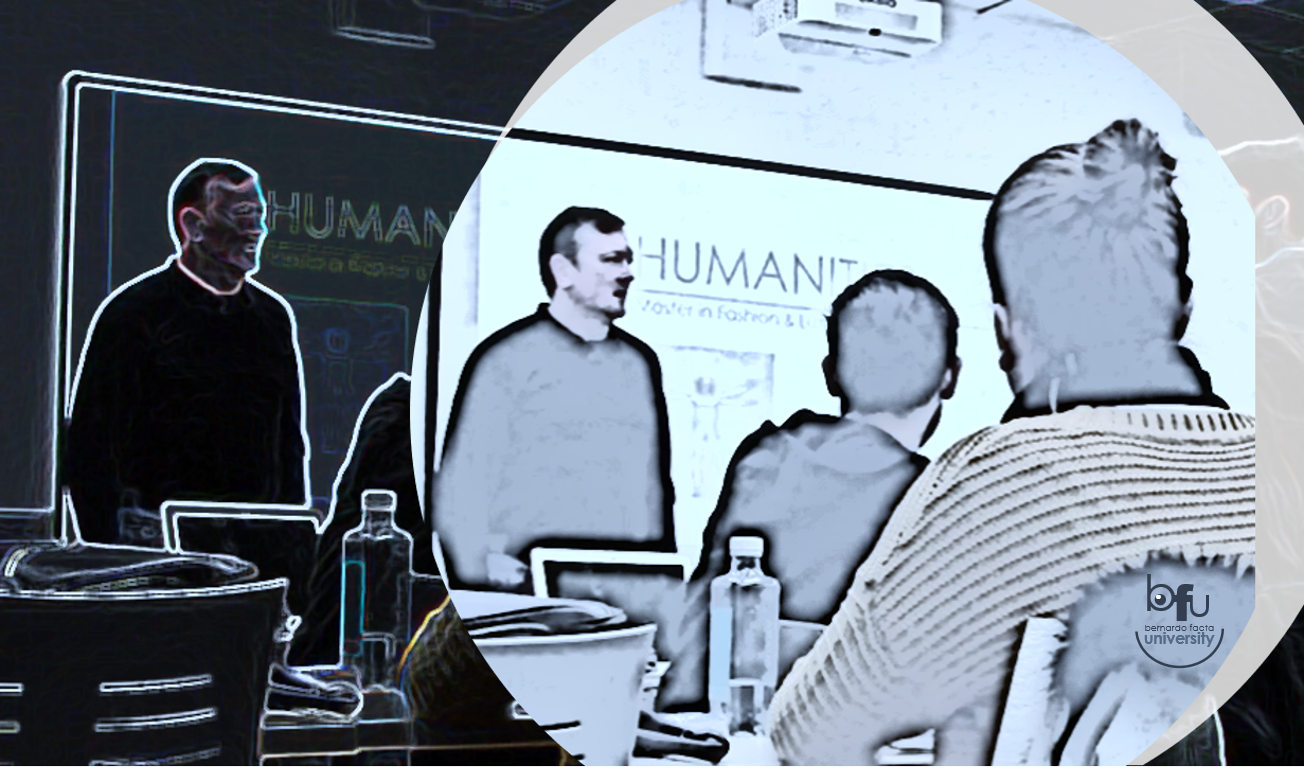
Let’s accept it. So frequently both students and professors are asking themselves why to keep going on the same way, whenever everything around seems to be different. Different challenges, needs, paradigms, ways of dealing with information …the very concept of Learning is dramatically changing with time, so needing accurate updating in its academic + superior levels’ echo.
New Learning for New Students by New Professors in the New Times. As well as many industries and the business world look for innovative ways of success, so should the academic and superior studies levels consider a proper adaption + forward-going inertia to grant coherent coexistence with the rest of evolving aspects of our beloved mankind.
From ancient Greeks to nowadays analysts, it’s an evidence the fact of humans learning more and better while Building Knowledge, instead of only being verbally told about it. In fact, master of masters Paulo Freire used to say that ‘it’s more than transmission of info, it’s about knowing’.
So, why the usual verbal transmission of info (knowledge) in big majority of universities and advanced studies houses? It’ll create ‘previous’ knowledge, so necessary to prepare the person (student) for further steps of practical development of higher learning stages, that will count on the person’s huge collaboration in the respective building process to prove beneficial.
I’ve personally voted for creative methods and techniques always in my professional life as educator, and honestly think that by offering creative ways of communication, learning, and interaction in general, we really demonstrate our appreciation to the interlocutors, usually bored of ‘more of the same’.
So, Collaborative Learning methods with active involvement of audience in the experience construction, together with creative/innovative approach to the Knowledge management are meant to be a good formula to follow. From the well known Case Method (Harvard, end of 19th century) to current insertion of Digital Technologies and Gamification, with Reverse Room or Problem-based Method as effective alternatives, our permanent additional involvement in Creative Learning Techniques keeps us entertained in the funny task of stimulating entertainment (precisely) and fun in students’ ways of growth at superior levels of education.
Favorite elements to us are ‘mystery’, humor, ludic challenges, intentional lies mixed with truth, and many other alternatives that will so probably raise the attention curve, involvement and active participation from our audiences in a real or virtual classroom. Obviously, better if each applied technique or resource is framed by a leading, proper strategy that will provide coherence + homogeneity to the whole process.
In further reports we’ll cover the main updates from best universities and research centers in the matter, by exposing and explaining as well as we can each innovative strategy + linked technique(s). Let’s hope you keep interested and take profit!
‘Til the Next one…
B (Sr)
CONCEPT MAPS IN SUPERIOR EDUCATION
META-LEARNING, CONTINUOUS LEARNING, SYNERGIC-COLLABORATION & OTHER ADVANTAGES…
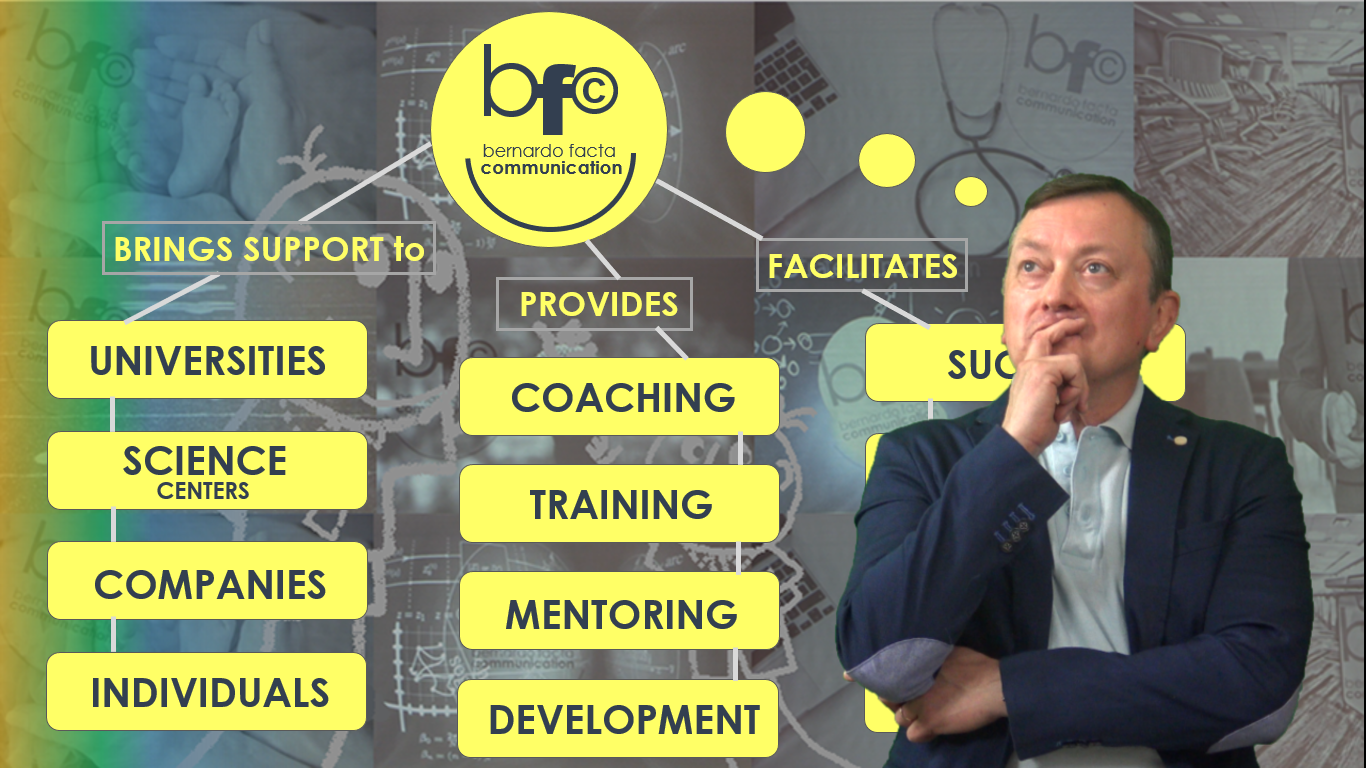
Due to current challenges in our society and mankind’s evolving process in general, a serious update is needed in the way we manage, share, develop and take advantage from Knowledge. At every level, with huge strategic focus on superior stages of training and education.
Concept Maps, created by Joseph Novak in the 70s and evolved for specific education purposes in the 80s (mainly by David Ausubel) are so effective graphic organizers of knowledge that boost learning and enable more successful, synergic collaboration in common management of information, far beyond the usefulness that (e.g.) Mind Maps can provide to similar scenarios.
As my brilliant mentor on the field, Dr. Paulo Miranda Correia (USP, Universidade de São Paulo, Brazil) clearly states: meta-learning (learning to learn), lifelong learning and evolving need + interest in innovative methods and strategies that change the class dynamics are some factors (among others) that justify educators’ increasing enthusiasm towards mastering the Concept Mapping technique in order to bring new exciting vibes to their Students.
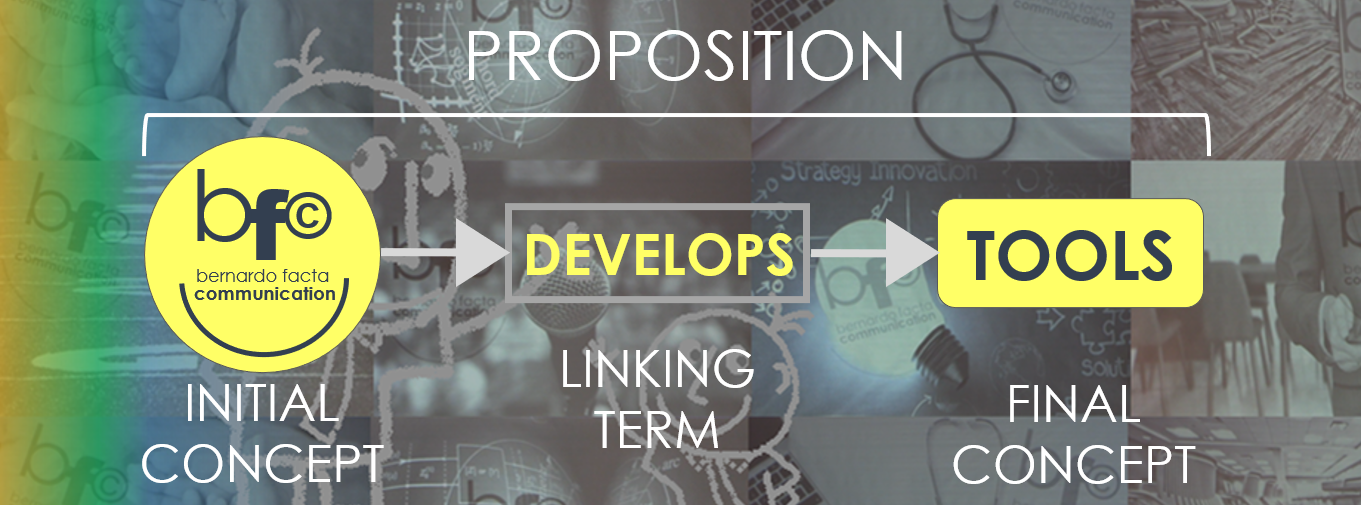
CONCEPT MAPS COMPOSITION + CONTRIBUTION
Concept Maps’ organization represents knowledge by means of ‘Propositions’ containing three elements: ‘Initial Concept’, ‘Linking Term’, and ‘Final Concept’, linked by arrows that show the ‘Proposition’s direction (conceptual idea built by the chronologic reading of the 3 elements by following the arrows’ direction). (Example in Ill. 2).
Inside this epistemologic system, the ‘Linking Terms’ explicit in clear + precise way the relation between the concepts (‘Initial C.’ and ‘Final C.’), thus conferring semantic clarity to the ‘Propositions’.
A Concept Map can contain more than one ‘Proposition’, usually organized the whole of them in order to solve a key ‘Focal Question’ that acts from the beginning as a ‘trigger’ by presenting a situation to be solved (explained, clarified, defined, etc.), usually to Students or work colleagues for didactic or professional purposes.
To accompany this article, the background exercise could begin by the Focal Question: ‘How does bf© help Universities, Companies and Science Centers achieve their Success?’
A first attempt to build mapped reply to this question could be Ill. 1, where some Concepts appear, even if still in embryonic way (missing arrows to define the Propositions’ path, e.g.), needing conceptual work to organize paths in order to add depth + structural strength, typical of this graphic solution and main advantage respect to Mind Maps, that show more random elements difficult to articulate with wholistic sense.
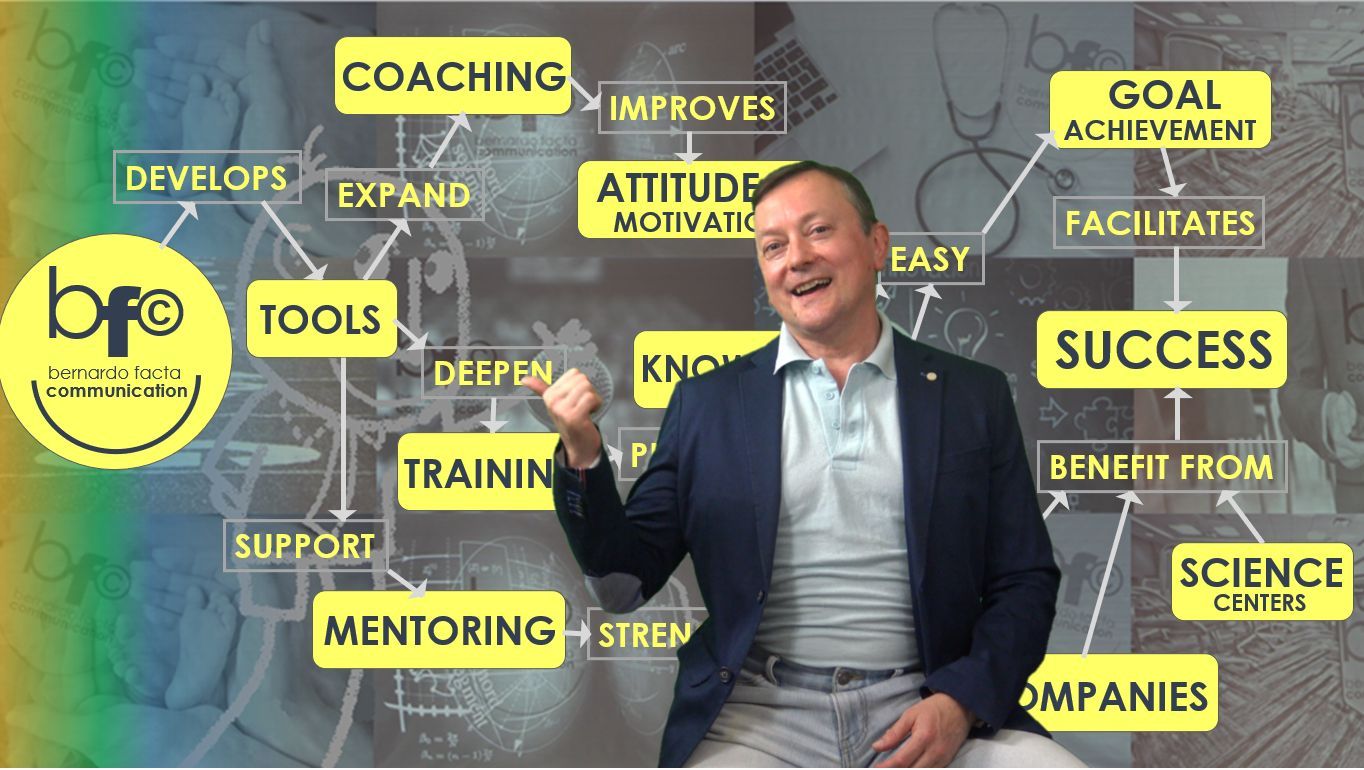
On Ill. 3, by the contrary, an organized path guided by arrows alongside the different propositional itineraries (based at their turn on Coaching, Training, and Mentoring as channeling Concepts) shows with higher clarity the way in which bf© acts to offer easier Success-achievement to its partners and Clients.
The ‘secret’ to clarity from Linking Terms rellies on them containing Verbs to explain the relationship between linked Concepts, usually telling how the Initial one influences the Final one.
In the strict field of Education, Concept Mapping proves extremely useful as knowledge + study organizer, as well as to practice useful revision (including past/recent information recovery), to evaluate (e.g. choice and properness of concepts respect to content), or to collaborate (negotiating concepts and meanings, or training argumentation/communication, etc.).
According to its strongest supporters, this technique can alter the whole teaching-learning dynamics, even if needing huge preparation + practice from Educators before implementation.
Kind of a ‘never-ending story’, the Concept Map is permanently improvable through frequent revision + eventual modification, always aiming towards the highest clarity in the way of solving the situation proposed by the initial Focal Question.
Interested? Just CONTACT US! Always a pleasure to prove useful to our dear Colleagues.
‘Til the Next one!
B (Sr)
RESEARCH SPIRIT
SCIENCE AND ART (AND WILD REBELRY) AT THE SERVICE OF DISCOVERY
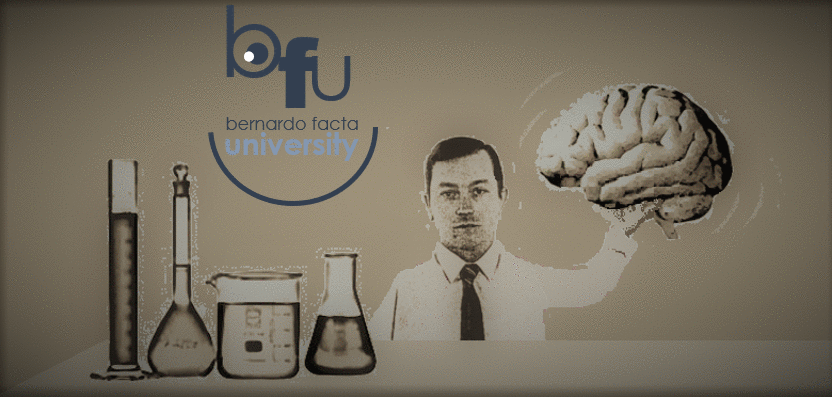
‘- How did you do this?’ questioned a multi-award winning painter about a picture solved with a ‘strange’ technique of my invention …I was enjoying a lot this curiosity from the master, and feeling sure of producing much more interesting stuff to share with my pupils at the art academy as a result of my daily fight against pre-established patterns (young rebelry). Many years ago…
Many years ago, too, I was enjoying the pleasure of taking care about several little geniuses’ contributions to varied fields linked to creativity, audiovisual expression, etc. From my position of Head of Practices in a prestigious university, my main task was to support research/innovation projects from outstanding students convinced of their potential to broaden borders.
In parallel, research on human mind and its ways of processing sensitive + environmental info was good part of my engagement towards science+art together, as main purpose was always to apply eventual advancement to audiovisual art and media production. Happy times!
Passion + resiliency + method + anti-method (braking rules) + rebelry + curiosity + creativity + excitement + lot of will to provide useful service throughout new achievements = RESEARCH. The type of it I’ve always liked and sometimes practiced from my huge effort to be at the highs of each opportunity.
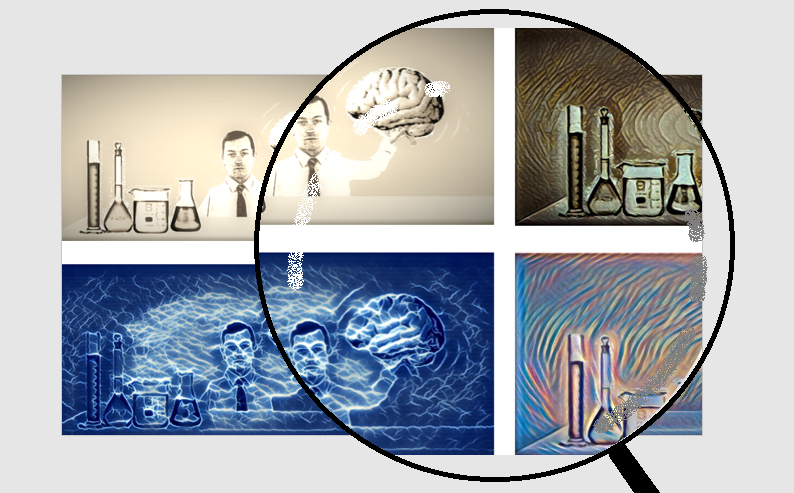
Nowadays I enjoy same pleasure in different fields: recent ‘research on research’ for instance (creative work together with my university students on Marketing Research, where to put focus on research itself, and Marketing afterwards). Some ideas there were found short after in the true Market! Fascinating.
Similar scope to permanent research in training fields and methods linked to both creativity+innovation and successful business management, in big companies that compete to win the same Markets we put under microscope during university classes.
Also, permanent contact with science researchers in several fields (Physics, Sciences of Earth, Computing, Nano-technologies, Quantum Physics, Astronomy, etc.) proves ‘contagious’, at least from the injection of inspiration to always go forward searching the ‘next step’ in the path towards successful discoveries.
Beyond typical quantitative/qualitative approaches, at bf© Research is our passion + favorite field since always, from our life-engagement towards its frequent ‘fellows’ Creativity and Innovation …and a wild will of achieving more, and better!
Love the high risk and uncertainty percentages usually linked to ‘trial and error’ processes, and imaginative ways of applying achievements (renewed visions, enhanced versions, discoveries and new angles) afterwards. Exciting!
Varied fields linked to perception, process of information and subliminal communication (applicable to art, business, and other areas) are keeping us busy these days, and we’re sure that every reader of this article brings in their hands curiosities and wishes to materialize according to own research …full success with this!
Best path towards genuine achievements and growth. Nice alternative to adapt + win in the coming, apparently ‘difficult’ new times.
We celebrate a professional-life cycle near what we love and feel passionate about, what is a great privilege, and wish to keep bringing support to many people and institutions throughout this coming ‘new reality’ in which (I guess) creative ways of adaption + solid new approaches will play a key role to build post-pandemic future.
Open arms to go forward together in search of this always-improved version of our reality, as evolution wants 😊
‘Til the Next one!
B (Sr)
LEARNING: FOUR WAYS
VERSATILITY AND ADAPTION TO EVOLVE KNOWLEDGE EXPERIENCES

Pleasure is the best ally for effective learning, according to neuro-scientists’ deep research on the matter (let’s name David Bueno once more). And we humans are born to learn, so: in certain way we’re born to enjoy 😊
From early modelling, with babies ‘absorbing’ the example from the new world around (their parents and family, mainly) in automatic, spontaneous way …to the meta-cognitive awareness on own mind potential being boosted in specific ways alongside a uni master-class, or simil.
100% of ourselves is prepared to learn-to-survive. Teachers, trainers, professors, mentors, etc., are in charge of this 100% during their whole professional lives. HUGE responsibility.
I embraced it with pleasure (precisely) since my early youth, (while beginning to teach Art in academies) to present time, after having added university, company (business) and science teaching experiences to my path. I learnt a lot while teaching a bit, and would like to share some thoughts + reflections, hoping to prove useful to colleagues and curious readers.
Goals, Time, Interaction, Means, Corporative frame, are some angles of approach that can help put order to the whole thing…
ART TEACHING 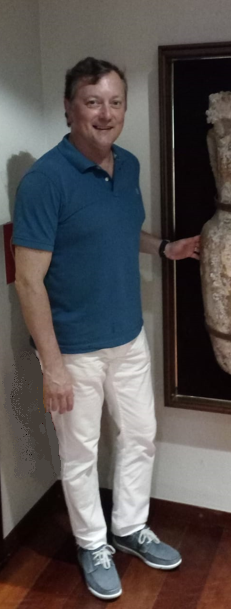
The field of creativity and expression, needing from the instructor a nice dose of sensitivity + respect in order to discover the other’s potential + letting them develop it through necessary freedom. Of course, we give for granted the deep knowledge on the art fields involved.
GOALS: usually growing in techniques to materialize own creativity, or just to express self in kind of therapeutic way. Many former students of varied ages (teens to adults, mainly) have told me this type of things when asked about their reasons to be there, learning art.
Children are usually inscribed by their parents because of showing some talented propension or simply because mom and dad want to get rid of them for a while 😊
TIME: 2-to-4 hours were a usual time-slot in my academies, enough for people of all ages to develop useful+entertaining experiences in classic art (oil, acryllic, water-color, sculpture, etc.), or mass-media art (illustration, graphic humor, comic, etc.). 3 days a week, as average, seems to be a nice schedule for everybody, or almost.
INTERACTION: a closed individual one is adviced in this case, as every person will always have a unique rapport with art. Good to detect their talents and favorite ways of using them before launching ourselves to suggest paths of development. Short, clear theoretical rushes with practical advice can leave space to much-needed freedom where to boost our students’ creativity and self-confidence.
MEANS: an obvious ‘hands-on’ methodology will help students quickly ‘dive’ into each technique’s characteristics, through direct contact with pigments on chosen surfaces. As support material, direct explanations, video-projections, etc. can also help.
CORPORATIVE FRAME: the art academy or school will perhaps have a specific approach (contemporary/research, classic, etc.) conditioning the general instructor’s approach. In my case, I admitted open range of scenarios from an open range of free possibilities.
UNIVERSITY TEACHING 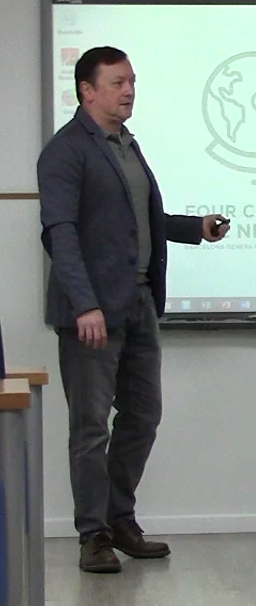
The field of rigurous depth in academic knowledge + research, where the professor (lecturer, researcher, etc.) mixes, usually, proven experience and high intellectual dominion of the career main subjects and fields. A constructive approach to students is here adviced, through a motivating, energetic style that will ‘shake’ them in order to install the curiosity spark calling them for ‘more’.
GOALS: every time more ‘instrumental’, usual goals today are to approve every exam until graduating for beginning a successful insertion in the market of professional world.
TIME: Independently from the whole career time expectation (from 3 to 6 year, as an average), each course will count on own schedule divided into time units from 40 min to several hours a day.
INTERACTION: generally distant enough to keep forms + confident enough to produce mutual synergic work alongside a collaborative process of growth until the student achieving main academic goal(s).
MEANS: depending on the type of career, best technology always helps (audiovisual support, adapted premises for versatile approach to varied fields, etc.).
CORPORATIVE FRAME: a necessary perspective to build homogeneity in the academic offer, that should leave anyway necessary doses of freedom whenever the discovery and scientific advancement come into action. A delicate balance to be taken into account by the faculty member(s).
COMPANY TEACHING 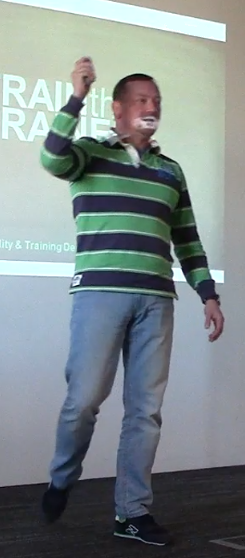
The field of wild competitiveness, and urgent results. Here, the achievement is always waiting for the trainees to succeed with it ‘yesterday, if possible’. Practical approach is here so much needed, with the trainer clearly knowing every type of goal (what do managers’ expect from trainees after the session, what trainees themselves want, etc.). Result-focused way of practical growth in concepts and linked abilities to make theory work by raising sales-conversion (even if we’re training ‘customer care’ staff, everything in business repercutes in sales and profits in the end). The trainer/mentor should be so solid in practical + theoretical knowledge in business and other linked areas of support.
TIME: already said, results to achieve through training sessions/programs are always URGENT, except in few exceptional cases of preventive campaigns that look for preparation for coping with probable (contingent) crisis, or for consistent competitive growth in times to come.
INTERACTION: dynamic sessions are usually the best ones, with every attendee getting interested and involved, contributing with their ideas, energy and work to the common achievement, and always aiming to realistic goals (determined percentage of improvement in conversion rates, reduction of work-time for high achievements, etc.). Confident emission and management (of session) from the trainer always help, as well as giving to everybody the opportunity to take active part. Here, good testing is a must: better if we ‘know that they know’ …how to do it better from the session’s end on.
MEANS: on one hand, the usual audiovisual technology should work + every element or material relative to the attendees type of work. Any support material useful for group dynamics (entertaining + enhancing activities) is always welcome too.
CORPORATIVE FRAME: extremely important here, as acting sometimes like the conceptual director in matters of style (of communication, sales, behavior, relationships at work, etc.) or ‘brand personality’. To be unique (different from others) is a nice point always in business terms.
SCIENCE TEACHING 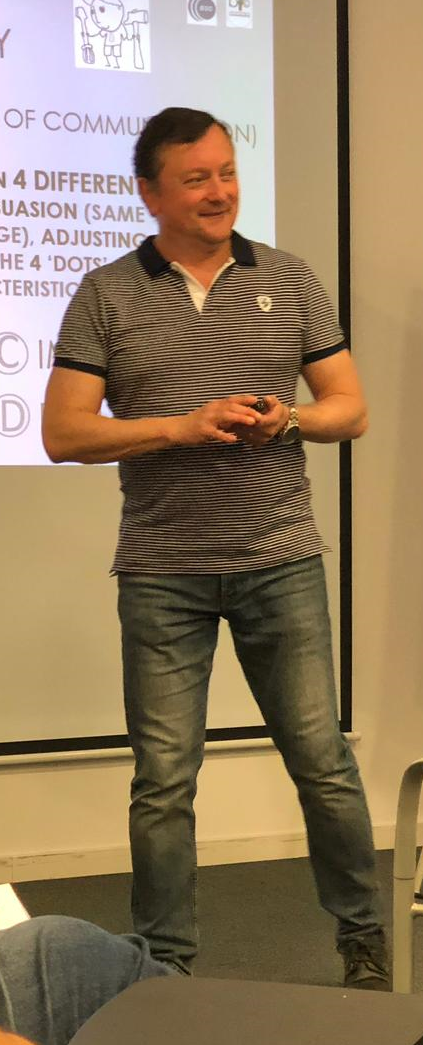
The pinnacle. The field of vanguard knowledge creating more knowledge (meta-cognition at its highest peak), where to push borderlines forward until discovering the ‘next step’ in mankind’s evolution. The trainer, professor, mentor, advisor, etc., should be prepared for dealing with brilliant minds always full of (healthy) curiosity, and to count on an advisable knowledge about how a science person reasons, interacts, etc. Better if coming from science background in any case, precisely because of the evident advantage in terms of general approach to ‘students’.
TIME: usually based on (research) project needs, it can progressively mute from ‘important’ to ‘urgent’, what conditions everything around. In Balseiro Institute for Nuclear Physics and Engineering (Argentina), for instance, students can run through whole nights awake in their laboratories until solving their project needs in time for next stage (harsh!) as well as in Barcelona Supercomputing Center (several fields on research at advanced level) people can work on weekends even more than in bank days, for same reasons. In terms of training schedule, and depending on the subjects to cover (field-based specific, or soft-skills support, etc.) a single session can last from 2 to 6 hours, and the coverage of an important field can need more than one day.
INTERACTION: science minds are always special minds, and their owners so particular in terms of interaction, involvement, exigence, contribution, etc. Advisable to always project confidence and solidness while motivating them in creative + entertaining way to avoid boredom and disconnection. In some cases, an anti-shyness pack can also help with the (frequent) ones used to isolation at their research cubicle(s). For similar reasons, always good to check and re-check how the session development is going and if its really interesting/useful for them. Otherwise, a good couple of ‘aces up on our sleeves’ will work.
MEANS: except for specific research-based reasons, the main ‘mean’ to highlight here is the attendees’ minds. Inmaterial potential there is unlimited, and (well managed) can produce true miracles. Besides this, again audiovisual (usual) support + activities’ material will always help.
CORPORATIVE FRAME: kind of a mix between university and company scenarios, here the need of financial support for research puts science in connection to business in many cases. Scientists should then remember that there’s a business goal together with the scientific one, and both go hand-to-hand until achievements proving useful to be applied into society. Besides this, every center counts on own ‘personality’ and way of, what will frame every action inside, research included.
SOMETHING IN COMMON FOR THE 4 ‘TYPOLOGIES’?
Hmmm …passion (true love for the education thing itself), adaptive abilities (versatility of approach to every-time-more varied needs everywhere), human warmth and connection potential to link with people (attendees) enough to interact in motivating, energetic way and: capacity to put necessary doses of PLEASURE into the learning ‘formula’, always remembering this, precisely:
It’s not about TEACHING …it’s about LEARNING,
so, always FOCUS ON THEM. If you are there teaching them, is because you gained this right. From this moment on, your public is the most important thing in the whole universe until the end.
‘Til the Next one, dear Colleagues!
B (Sr)
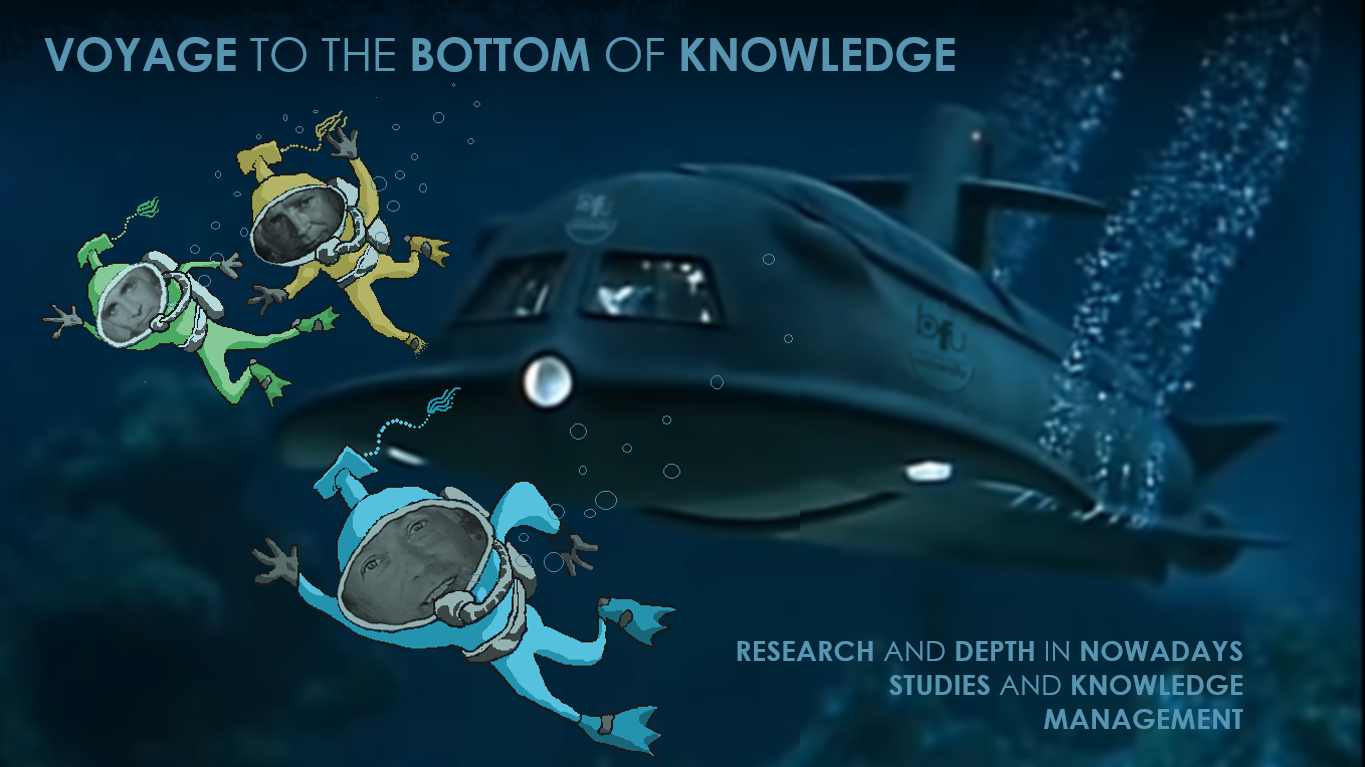
Where is the marvel of this discovery while ‘diving’ into the yellow pages of a book that contains the miracle of Knowledge?
Where the pleasant surprise of ‘- Oh, really? …wow, would have never imagined!’ even if not directly linked to what the questions in the next exam will be about?
It seems that nowadays knowledge has became more than ever just ‘instrumental’. Simple bargaining chip to get the next slide of success on our way to graduation that guarantees us some economic and social power.
‘…knowledge has became … just ‘instrumental’: simple bargaining chip to get the next slice of (quick) success…’
A recent survey at Universitat de Barcelona (UB) showed students’ preference for professors with ‘enough knowledge’ to teach to them.
After depth in the respective research, it was pretty clear that they wanted for the educator to be knowledgeable on the managed matters …even if to the necessary point in order to approve. That’s it.
In other words, of course a ‘not-knowing’ lecturer would be making them lose their time (and, perhaps, motivation) …as well as a ‘too-knowledgeable’ one could fall into erudition, making any reply, clarifying speech, etc., become an avalanche of ‘excessive’ dose of knowledge that they wouldn’t be applying to the main goal: coping with the next exam.
Paradygmatic. Nice example of times in which we seem to live in a rush, goals are ‘instant’ and knowledge is every time more considered as the short-term way of achieving the short-term green mark to go forward for the next short-term one.
‘Every past time was better’ usually oldies say. I’d agree on ‘being different’ at least. Still remember when we needed to go to the library for the pile of books from which to extract the needed knowledge (until here, similar situation) throughout patience, high attention, and a permanent strategic path to follow in order to go on constructing our inner conceptual structure that would prove the pillar for further academic success.
Was usual to sit down in a comfortable table of these silent temples and to watch the sun going down until the librarian remembering us about the temple closing in 10 minutes.
We were until this moment concentrating and gaining depth, page after page, taking notes, mentally linking useful conceptual discoveries to the previous ones, building brick after brick the solid bridge towards acknowledgement, retention, ability to explain, analyze and (if necessary) summarize the ‘theoretical box’ that we would be opening during the next challenges (exam first, professional real-life afterwards).
Now same process could be described as: turning laptop (or mobile phone) on, pinpointing first findings from the searchers, choosing the clearest + well-summarized + visually appealling stuff, copying + pasting, quickly reading to choose next click towards next related link, until seeming enough for ‘approved’ or the score we’re looking for in the next exam.
More variety. Less depth. Invariably. Different ways of processing, using, profiting knowledge. ‘Want it all and want it now’ instead of ‘Want it solid and (if possible) permanent’.
‘More (instant) variety. Less depth …Different ways of processing, using, and profiting knowledge.’
Depth. Like the one both Captain Crane or Admiral Nelson were enjoying inside their powerful submarine (the ‘Seaview’) in this 60’s series, ‘Voyage to the Bottom of the Sea’, alongside mysterious journeys bringing them to the unknown, the marvelous, the ignored, the essentially useful to discover and grow in order to help mankind grow too afterwards.
Nowadays’ students have an impressively quick mind, adapted to multiple click-functions on an electronic device bringing them from page to page in less than the blink of an eye. ‘Microwave thoughts’ as we commented in a recent article.
Yesterday’s students were having slower rhythms accompanyed by deeper immersion in the required knowledge to learn, process, and profit (desirably in the longest possible term).
Our brains are today extremely stimulated from instant variety and sometimes such a frantic speed leaves a bit of conscious light to go on choosing a driven path towards acquirement of solidity in the conceptual pillars of what we’re studying. Sometimes it only pushes towards an instant satisfaction of having ‘patch-worked’ with different visually-appealling sources that are many and look good. ‘It has to work, man!’
Surfacial process of information. We’re more informed and less formed. We are automatizing data pipeline in a rush, running away towards achievement of a quickly-achievable milestone in the never-ending rush towards quick success.
‘Surfacial process of information. We’re more informed and less formed …automatizing data pipeline in a rush…’
Just by stopping the ball a bit, gaining some perspective and consciousness about the true sense of knowledge and its enormous possibilities to make us better, we can (yes, of course!) run through it by means of all of the modern technology and speed. Good things, better if soon too!
The point is: balance should prioritize ‘good’ before ‘soon’ in order to grow genuine, solid, useful, powerful, enhancing, boosting Knowledge that will burn like the flame of the engine pushing us to the next level of growth (good) more than to the next quick-goal (soon).
Let’s SLOWLY reflect! 😊
‘Til the Next one,
B (Sr)
EDUCATING EMOTIONS
OR: HOW TO WATER OUR CHILDREN & YOUNGSTERS’ SEED THE MOST SUCCESSFUL WAY

From Jean Piaget time it’s an evidence the fact of childhood being a key stage for human development, with special focus on the emotional + social sides of it (‘limbic’ or ‘mammalian’ ones according to Paul McLean, e.g.) being ‘educable’ in order to grant best possible standards in self-accomplishment, happiness, etc.
In fact, education to children in both emotions + social skills will help them raise their flexibility, a key side at its turn in evolution, easying the development of openness, creativity, or adaption to circumstances (versatility), all of this essentially gifting them to achieve highest success in both self-management and coexistence with similar.
As Mª Àngels Viladot (Universitat Oberta de Catalunya) clearly states, Emotional Communication will be a strategic choice in education to children and youngsters, as a solid support that involves space, time, and physical + intellectual + affective + moral factors, all of this proving essential to manage possibilities, examples and ways of ‘designing personal mood, character, and way of being’.
A higher frame to arrive there is E.Q. (Emotional Intelligence), a revolutionary concept in the beginning (1990, psychologists John Mayer and Peter Salovey) and yet today, mainly through Dr. Daniel Goleman popularization and further development towards Social Intelligence, which fundamental aspects are already advanced by original E.Q.

So, how to channel main involved stuff in this article? Linking E.Q. to Education, let’s highlight the fact of school and academic results being highly dependent on emotional factors, as every educator knows. Pupils and students’ confidence, curiosity, goal-driven will, self-control and ability to establish positive human relationships will certainly count in the end, in terms of level of success in their school or academic path.
Torsten N. Wiesel and David H. Hubel developed through research the concept of ‘opportunity window’, or natural span of time for neurons to connect (by stimuli) in order to support human functions ans processes afterwards. In the case of emotions, this window is ‘open’ from our birth until our 2 years of age. That’s it. What means that affective links between baby and mom/dad/family, etc. will count a lot, as well as way of dealing with environmental factors around. Emotional education begins there.
Family first, school then, even if ‘family always’ (cooperating and collaborating with school) should be the ideal path of support to education in general, emotional one in particular. When this system and its protective + inspiring contention fail for whatever reason, there’s high risk of children/youngsters falling into loneliness, lack of values, depression, alienation… sometimes ending by imitating what video-games ‘tell’ them (how to kill, how to produce damage and enjoy this in addition, etc.) with the invaluable assistance of drugs and other social cancers from nowadays.
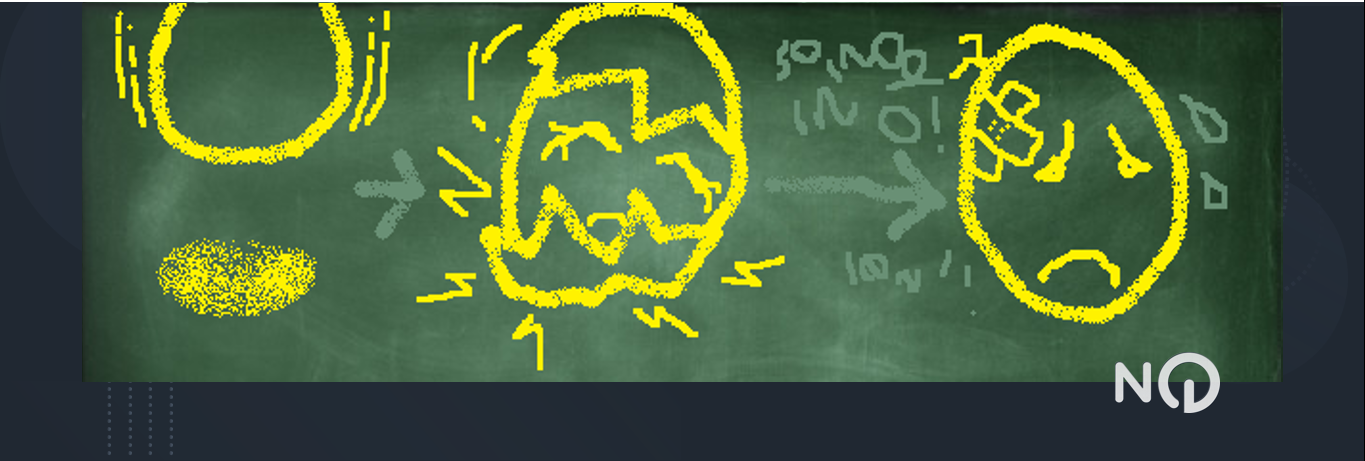
LEARNING ABOUT EMOTIONS…
Culture vs. Quick Success seems to be a sad dylema in our society and lot of students + professionals out there. Culture bringing values (esthetic, scientific, technologic, economic, or ethic ones) vs. the simple search of economical + social privileges. It seems our society seriously needs to highlight the first option! …mainly the ‘ethics’ side, together with a deeper bet on E.Q. to educate people in problem-solving, valuable advancement, or fairness + justice in their life, e.g.
How can this be taught? Or, better said, how can Emotions be Educated?
MODELLING by Examples could be a good option, by working on values like ethics, empathy, capacity to discover + control own emotions, ability to discover and deal with others’ emotions, etc. Reading, watching + commenting Video, constructive discussions between pupils and teacher can prove so useful for this.
REFLECTION is always advisable through (again) deep + focused discussion, debate, application activities with clear + solid conclusions, etc.
We accept the fact that E.Q. skills need a long-period education. Hope it’s obviously worthy and we share conviction about every investment of time + energy on this being priceless.
Main PERSONAL E.Q. skills to be supported could be: self-knowledge, identification + expression + management of feelings and inner emotions, control of aggressive impulses (rage, hate, anger), gratification-delay, control of stress and anxiety, resistance against frustration-melancholia-depression, use of proper self-deffensive mechanisms, etc.
Regarding SOCIAL + INTERPERSONAL ones, we can name (following M. A. Viladot work) knowledge about others, attention to others, resistance against negative influences, empathy (or how to stand in others’ shoes), negotiation to solve conflicts, etc.
True that the embryonic phases happen usually at home, before 2 years of age, and are mainly non-verbal from the obvious lack of linguistic knowledge in babies.
Afterwards, at school, intelligence (including the emotional one) becomes hugely linguistic, thus taking advantage of literary support for development, like books, story-telling, and any verbal source of growth.
A turning point in children (positively projecting benefits to their future life) will be the maturation of the ability to verbally express their self-emotional states, what will positively influence afterwards their empathy development, and improve their potential to establish good interpersonal relations (‘growth’, if we remember how socially-dependent is humans’ life success).
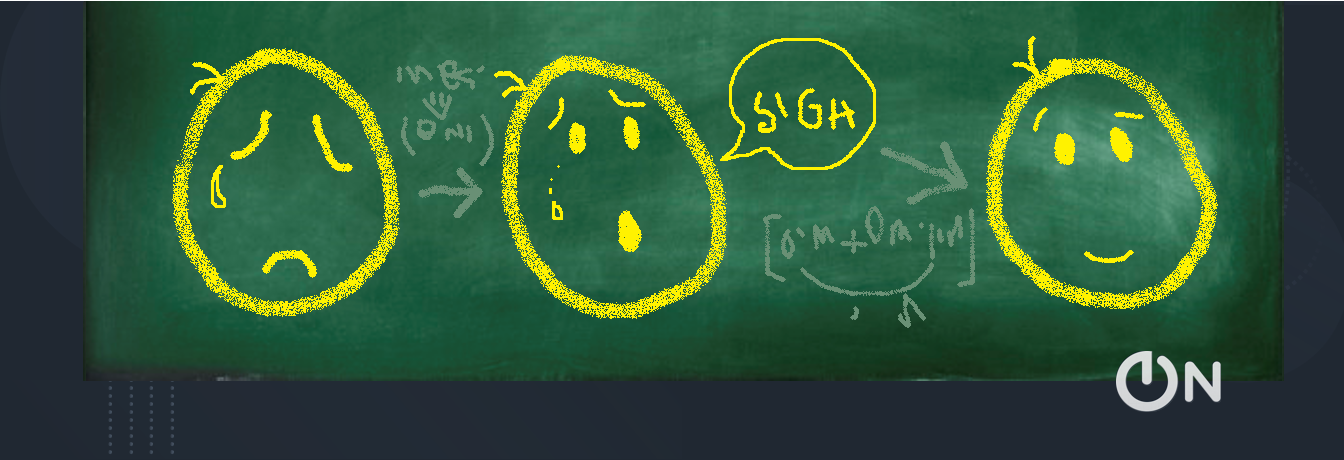
I like to consider three interconnected dimensions in order to approach a shool class or training session physically happening inside a room (let’s remember that virtual education is gaining field every day too). Let’s call them ‘background’ (BG: conceptual basement, consultated sources, etc.), ‘middleground’ (MG: implementation mechanisms and resources like material, activities, technology, etc.), and ‘foreground’ (FG: human potential involved, as e.g. intellectual or emotional factors being stimulated throughout the experience).
At every level (primary or secondary school, university and so on) I’d suggest to include in the BG pillars like Piaget, Goleman, Ekman, Robinson and others, mainly through their best achievements in the matter of Education linked to Emotions. Regarding MG, it should be adapted to respective level, with higher physical + entertaining stuff in the primary-initial stages, more media-related material for secondary-students, and analytical depth together with freedom of research in the university case. As well as for the FG would be nice to always foster their learning on ‘ways of thinking’ more than ‘what to think’ (intellectual side) together with the obvious stimulation of emotions during the emotional learning on emotions 😊 what is a meta-concept that can prove logical, besides seeming a true rigmarole.
PRIMARY level E.Q.: Pedagogic intro suggested, backed by colorful and entertaining books/video that can show values and human emotions through tales and good examples. The contact + interaction with fellows (and teacher) should be permanente and well regulated in order to discover best ways of synergic behavior, always accompanied by fun and joy in the different activities and didactic phases.
SECONDARY level E.Q.: Reinforcement of concepts and factors (on E.Q. + E. Comm) should continue here the initial path (primary school), by adding focused interest on scripts’ content from the managed books or films (reality or fiction genres) through analytical perspective with didactic intention. Team-activities should be kept as a permanent field of experience for intellectual and emotional development, and discussion + debate could be frequently proposed, always closed by relevant conclusions.
UNIVERSITY level E.Q.: Projection of growth in both fields (E.Q. + E. Comm) should be the expected thing here, consultating the best/last/deepest conceptual sources from the beginning, fostering individual involvement through essays and other written types of work, as well as organizing productive + synergic team-work for innovative, constructive proposals. Room for creativity and research is a must that we give for granted (because of obvious) and differently from the usual only-intellectual focus at academic levels, it whould be advisable to highlight emotional + social behavior during classes and activities (e.g.) in order to discuss and analyze afterwards main attached points.
As great Marshall McLuhan always taught, the ‘HOW’ is almost always over the ‘WHAT’, and it keeps working for Emotional Education too. E.Q. (‘E’ for Emotion, Expression, Empathy, etc.) over I.Q. (‘I’ for Intellectual, Information, etc.) is the current way of proving happier (in life) and more successful (at work), so:
Let’s EDUCATE EMOTIONS all of the time at every level.
‘Til the Next one!
B (Sr)
EDUCATING FREEDOM, EDUCATING RESPONSIBILITY
REFLECTIONS ON THE INFINITE POTENTIAL OF EDUCATION TO GIVE WINGS OR PUT SHACKLES

‘The best you can do for others is not to show your richness to them, but to help them discover theirs’ (W.v.Gœthe) …then it’s not about creating persons but helping them ‘create themselves’ what education should be about.
The analogy with fishing is also there (‘not to give fish to them, but to teach them how to fish’) and many others that allow us to play same semanthic game with thinking, key point in education b.t.w.
So, instead of teaching our children and youngsters what to think, would be much nicer to invite them to create their own ways of thinking. Their own ways of dealing with information and reality in order to build respective perception, judgement and (furtherly) decision-making. They’ll be then responsible of their destiny because of having been free to design it.
Freedom = Responsibility. Still remember a quote that some clever person (Father Hernán Pereda CPCR) told me once: ‘Freedom is the capacity + ability to do what we have to do’.
In other terms, far from being a random ‘kingdom of free will’ at all times (like the weather vane subject to the winds’ whim), life should be the navigation of favorable and opposite winds, always aiming at the goal that we know is ‘ours’ and we must reach from the best of us.
Freedom = Responsibility.
If the wind of our message is too strong and determined in only one direction, then we’ll have many weather vanes inside the class-room aiming towards a unique point. ‘Forced’ to do so. Differently from this sad panorama, every good educator should work better with students’ huge potential to analyze, reflect, choose and decide …and, of course, make mistakes!
The shortcut ‘mistake = punishment’ has been committing barbarities in our schools first, in adults’ professional life afterwards. ‘Creativity = 0’ could be a sad (even if true) consequence of this ‘style of uneducation’. Science advancement comes through ‘trial & error’ paths of development. Let’s allow people to commit mistakes and then, help them learn from them to grow a stronger, more secure future.
Even professional terminology is ‘contaminated’ by this dangerous ‘wave’ in its interpretation, defining Training (e.g.) as ‘sharing knowledge’, with many people understanding that, as Trainers, they’ll be transmitting what they know to many ones that don’t know, this way ‘sharing’ their outstanding wisdom like the gardener that waters dry plants.
‘Sharing’ in education should be rather understood as teaching + learning from them. Suggesting subjects + asking for opinion and eventual debate in order to create this magical effervescense of vibrant thoughts + ideas looking for light on a subject that will illuminate everybody in the end, not because ‘one’ has the powerful light-ray, buth because everybody is holding the candle of their own contribution.
Edward Deci, based on research at Rochester University in the 70’s, exposed the ‘Self-determination Theory’ according to which children and persons of any age only need three things to give their best, non of them being an ‘external reward’. Instead, they should feel CONFIDENT from awareness on their capacities, FREE to look for any new type of solution and to implement them from their sensation of control (previous ‘confidence’), and CONNECTED to others for feeling supported and accompanied in the process.
So: SELF-CONFIDENCE + FREEDOM + COMMUNICATION abilities, and they’ll WIN.
Or, in other words, they’ll ‘self-determine’, what means whatever circumstance they’ll live will be the result and consequence of their own creative decisions on Self. Including mistakes.
Freedom = Responsibility.
Better problems to solve than inoculation of ‘absolute truth’. Better to provoke their engagement and wild involvement in vibrating debate than to ask them to lift the lid of their skulls for us to ‘fill them’.
Let’s invite them to ‘live’ every step of the long growing cycle until maturity = decision power based on solid own achievements in terms of Self-determination based on values, wisdom and goals to achieve that will always come from their free + responsible choice.
‘Til the Next one!
B (Sr)
‘QVO VADIS UNIUERSITATIS?’
SOME REFLECTIONS ON UNIVERSITIES AND THEIR WAY OF FUNCTIONING + GOING FORWARD

Still assumed as the paradygm of human intellectual excellence, it has came the time to focus on this and other aspects regarding true role of universities as ‘engine of advancement and development’ in contemporary societies.
Some years ago, Sir Ken Robinson was doubting about good education being possible without freedom, commenting b.t.w. from his huge experience in both fields (education and freedom) how dangerous it could arrive to be any extremely pre-determined + over-ruled path of growth, as they’ll inevitably reduce freedom angles, for instance in order to ‘positively fail’ 😊
If ‘trial & error’ defines the way of success from science (supposed to be a true ‘peak’ of minkind achievements), why is usually mistake that penalized? According to Robinson (and to logics) the fear to fail will kill freedom from the beginning, inviting people to adhere to the secure pre-walked itineraries. How ‘creative’ and ‘innovative’ can this result?
Let’s remember that universities are thought to be scenario for research and enlightening advancement, thus needing the necessary ‘freedom atmosphere’ and frame to try in order to discover. Unfortunately, I’ve personally experienced (both as student and professor) the huge inconvenience of belonging to a high studies house that prioritizes rigidness of rules much more than growth. I’d seriously advice these institutions to dramatically, immediately change path, in order to really look for excellence instead of uniformity and allignment as rigid attachment to empty rules.
In the professional and business field in general, it’s a well known fact that over-rulling anything (a Project, a Team way of function, etc.) can be serious cause of de-motivation. Difficult-to-follow rules that contribute poorly to general success are stupid rules (sorry!).
In a social-structural context, as journalist Josep Corbella states, prestige universities are meant to be nest for education, research, innovation, and even contestatary movements looking for (always) higher freedom and growth for mankind, at least from their written principles. An extremely closed university structure, unable to allow mínimum freedom to their inner compositive stages (mainly students and professors) will hardly reach superior goals in terms of true success.
Sociologist Manuel Castells adds political ‘pep’ to the thing by asking for ‘less uniformity’ to universities (from the government actions and politics) in order to foster educational innovation and freedom of research to move forward in independently-competitive way. So, every good university should count on inner mechanisms of innovation to re-create constantly if necessary, and to contribute better to the society they belong to. Freedom.
Higher autonomy to European universities should be, according to him, a convenient factor in order to boost flexibility in many orders, what usually grants versatility of options to grow + move forward.
Then: ‘QVO VADIS VNIUERSITATIS?’ (‘Where are you going University?’) Let’s hope that majority of highly-ranked universities are aiming towards risky freedom as much as possible in order to have greater chances of success from the winning symbiosis of creativity and innovation, thus allowing their people to breath higher while advancing confidently in search for success.
‘Til the next one!
B (Sr)
ADVANCED TRAINING SKILLS
UPGRADING POTENTIAL FOR GROWTH STIMULATION
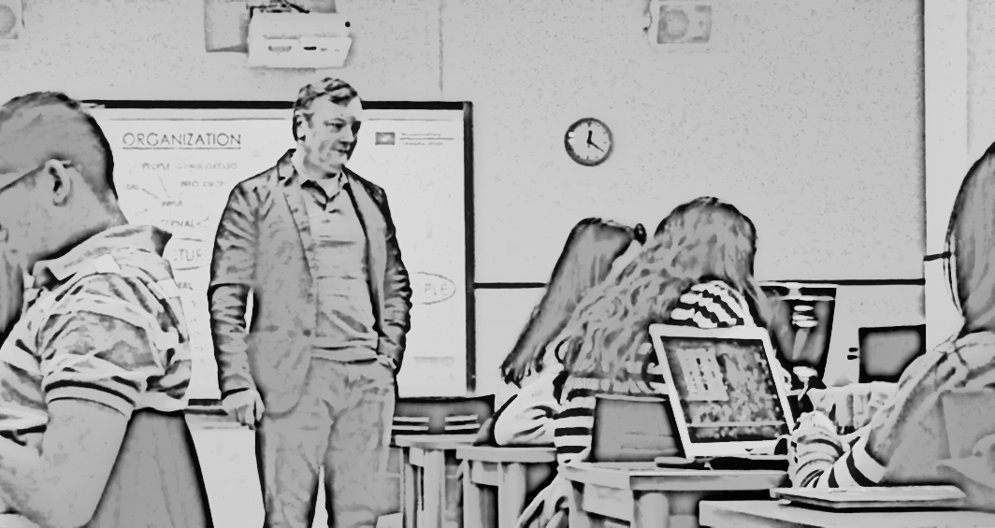
Good part of our didactic stuff in seminars like ‘Advanced Training Skills’ (usually delivered to professional Trainers, Teachers, Professors, etc.) comes from the example + advice of outstanding educators that kindly share their best through 3 tips/recommendations.
Some Examples:
1. NEGOTIATE EXPECTATIONS+GOALS WITH ATTENDEES IN THE BEGINNING. 2. WORK ON YOUR WEAKNESSES (I.E. POOR TIME MANAGEMENT DURING CLASS, TIREDNESS FROM RUTINE, ETC.) UNTIL OVERCOMING THEM. 3. BE CORPORATIVE: A TEACHER ALWAYS REPRESENTS A SCHOOL/COMPANY’S PHYLOSOPHY. (From Gregorio Casamayor, former IL3 Institut Director, UB Universitat de Barcelona).
1. ASK QUESTIONS (THEY CHECK, TEST, MAKE REFLECT, MOVILIZE). 2. BE DRIVEN (PURPOSE-ORIENTED), PRACTIC (CLEAR) AND POSITIVE (SOLUTION-ORIENTED). 3. IN ‘LESSON PLANS’ INCLUDE STUDY (KNOWLEDGE), REFLECTION (LEARNING) AND OBSERVATION (WISDOM). (From Anne Dwyer, Professor, Lecturer, EU European University Business School).
1. EMPHASIS IN OPENER (IMPACT/1stIMPRESSION). 2. PITCH+EMISSION VERSATILE ADAPTION TO NEED (TEACH, ENTERTAIN, EVALUATE, etc.). 3. ONLY SIMPLE+ATTRACTIVE ACTIVITIES (CLEARLY EXPLAINED BEFORE, PRODUCTIVELY PROFITED AFTER). (From Gloria Sanz-Pinyol, freelance Professors’ Trainer).
When asked about my advice, I’m always doubting in the beginning, then surely giving different replies from one occasion to the other, even if I seem to agree (with my own self 🙂 in:
1. LOVE THEM. 2. SCAN THEM. 3. BOOST (INSPIRE) THEM.
The ‘LOVE THEM’ thing should be brought to the (class or training) room from home, what means: before even knowing who our public will be, we FEEL the need of SERVING them best possible way, as we’d do with our sons/daughters because we simply love them.
The ‘vocation’ concept, more frequent in Spanish, is about natural, spontaneous inclination towards an activity (e.g. teaching, training, educating) because of a strong need to get involved in it. As Training orthodox definition is ‘sharing knowledge’, we educators are feeling this need of sharing. In the beginning it can come from egoistic corners (I want to look clever and fantastic in front of my future public) …in the end it’s always about contributing to human beings’ growth. Because we love the human being.
The ‘SCAN THEM’ thing comes as a consequence of the previous statement: if it’s true we are there for them (more than for ourselves) so we’ll put all of our attention on them from the beginning: we want to discover Who and How they are + What they Need from the communication + didactic points of view. Only this way we’ll be able to shape our class/session in accordance, adapted to what our scanning has told us.
People diversity is always an asset helping us build synergy: taking advantage of everybody’s best in order to create a contagious flux of permanent contribution from ones to others. Every audience member teaching from the best of self and learning from the best of others all of the time. By studying David Kolb, or Howard Gardner among other masters, we know about diversity of types of intelligence as well as different ‘favorite styles of learning’ to which to adapt. This key info comes to us trainers from the initial scanning + further permanent real-time high attention to our class.
The ‘BOOST THEM’ thing, differently from the ‘LOVE’ point before knowing them and the ‘SCAN’ point while knowing them, is about effects on their reality after having known them, what frequently comes under the form of ‘INSPIRATION’. Prof. Dino Salinas (Teaching Department, Universitat de València) speaks about an ‘active principle’, or creating the ‘spark’ during the class for them to want ‘more’ after. Something should be ‘activated’ inside them during the class/session experience.
A marvelous thing having happened to me as an educator is to casually find someone somewhere spontaneously telling me ‘hey Bernardo, I was your student once and your classes inspired me for these things (in life or in their profesión)’. I’m pretty sure that this ‘magic spark’ gets on in every class or session with passionate trainers giving their best. Be sure that you’re starting things you’ll rarely know that will happen, even if they will, like the polen blown by the wind germinates after long distances and travel time.
By LOVING THEM let’s work on our spirit: values, convictions, deeply rooted beliefs, until being sure this IS our thing to do (contributing to human beings’ growth).
By SCANNING THEM let’s concentrate 100% on our audience from the beginning: they’ll throw ‘tones’ of non-verbal and verbal information to our strategic adaption capacities, in order to design and frame interaction towards their highest possible benefit.
By BOOSTING THEM I just understand living the experience with highest intensity (what is usually contagious) as the best possible example is the natural, genuine one that we become (even being unaware of this) through our action and pitch alongside the class/session.
GROWING PATH…
As well as every Training (or Coaching) session should always shorten the distance between their Potential and its Concretion, same exercise should be searched and accomplished by us educators all of the time.
WHAT ARE MY STRENGTHS? Let’s identify + use them properly whenever we can/is needed.
WHAT MY WEAKNESSES? Let’s discover + diminish/cancel until achieving success.
Both paths will mean in the end we’re approaching a higher Concretion from our true Potential. Then we can put the focus on THEIR growing path 😊
THE ‘WHAT’ (ADVISABLE ELEMENTS/CONCEPTS TO ENRICH OUR WORK)
Being Training a specific way of Communication, it always rellies on the respective pillars for highest success: Reception and Emission should be boosted by Questions and Metaphors as the simplest approach to the thing.
Francesc Imbernon (Lecturer at UB, Universitat de Barcelona) makes specific emphasis on being outstanding in both receiving and sending Questions as a way of building successful training: good Question-Askers, as we can boost their reflection or persuade them through the Questions we ask and ‘how’ we ask them. Good Question-Repliers too, as we can do more than fulfilling knowledge gaps through our reply and way of transmitting it: we can stun them and create even higher curiosity to go deeper afterwards for example (the ‘spark’ :).
Metaphors, at their turn, are a powerful ally to trainers too, under any of their forms (examples, parables, analogies, etc.), always useful to approach more and better the knowledge being managed to their main addressees for them to ‘get the point’ easier, earlier, in more comfortable way.
Right dose of Humor can make marvels as well, by influencing emotional state (crucial), strengthening the link with the public (essential) and easying this way assimilation + retention of main concepts, elements, and ideas (key). Beyond the strict ‘joke’ we’re speaking about jokey spirit, an opportune laugh, etc.
Linked to previous, Creativity will bring the experience to its peak by varied means as e.g. making the thing more entertaining (the unexpected raises public attention and interest usually), and taking from them sincere thankfulness, because of having avoided the boring ‘more of the same’ grey line that sometimes we find in neutral professionals that use to read text on screen, verbally repeat what is already written in slides (sad redundancy) or appeal to ‘cliches’ to propose or to move situations forward.
A funny curious spirit of permanent joy + research coming from the Trainer or Professor will always impact in positive way and inspire people in the room to act accordingly.
Enough for today, dear Advanced Colleagues! 😊
‘Til the next one,
B (Sr)
HOW INTELLIGENT IS YOUR SON?
(ABOUT DIVERSITY OF APPROACHES TO THIS CALLED ‘INTELLIGENCE’)
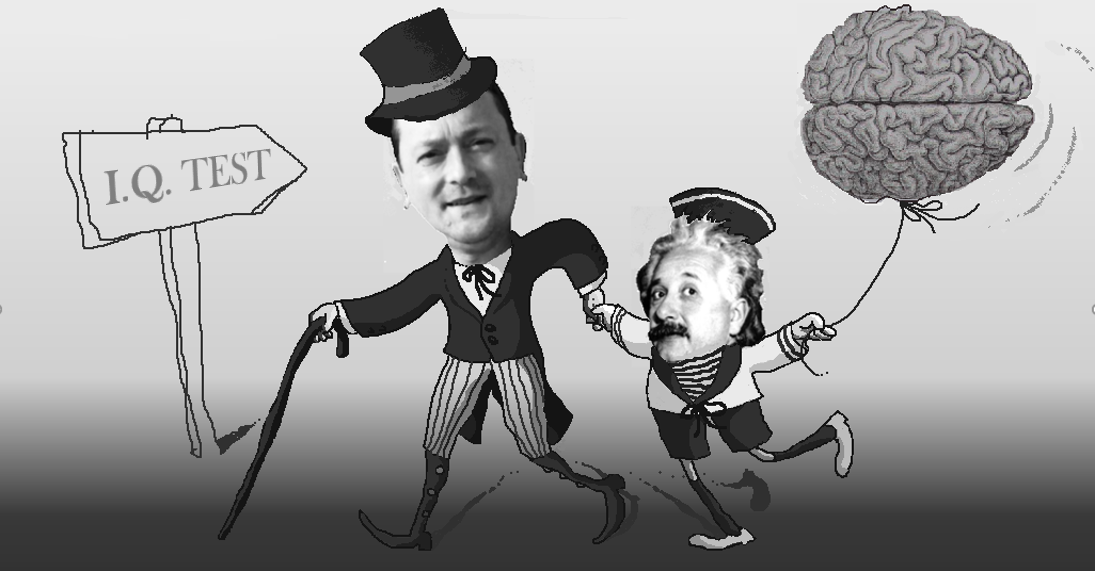
Wrong question, apparently, both in intellectual and emotional fields. Dr. Howard Gardner (Harvard University), author of the Multiple Intelligences theory, claims for intelligence being in reality a combined set of different types of it: from Linguistic (word-smart) to Interpersonal (people-smart) ones, through a nice range of others, the correct question should be instead ‘How is your son intelligent?’→ what about the distribution and proportion in their ‘set’.
Something alike happens, according to Dr. Daniel Goleman, in the emotional intelligence side, where a ‘map’ can be determined to every individual in terms of items like Self-control, Resiliency, capacity to Self-motivate, etc. So: ‘How is your son emotionally intelligent?’ should be the thing here.
According to Murray & Herrnstein, two former referents in the study of such an interesting concept as intelligence is, we can define it as the ability to cope with different things as for example: be aware of Self, analyze, solve problems, describe the world, allocate scarce resources, exchange information, and so on…
‘Everybody can do this, including my son!’ we’ll say, being certainly right. The point is everybody has a fingerprint too, and all of them differ.
This way, we should get interested, perhaps, in what is each one’s difference, mainly if our task is related to education or training, in order to take differences into account to teach better.
Outdated education systems highlight only Mathematics or Literature as ‘important’ subjects, leaving aside or in second place many other sides of human intelligence that, if well considered and stimulated, could make from their owners more successful beings.
Anything else in the universe of intelligences?
We can count on Non·Verbal Intelligence, or the capacity to perceive + interpret the non-verbal emission from interlocutors, and to give adapted reply while caring about our goals to achieve at the same time (according to Teresa Baró), even if we could define it also as the ability to analyze information and solve problems (original Murray & Herrnstein frame) by using visual or hands-on reasoning (two from Gardner’s list) …everything seems to be connected!
To follow, Vital Intelligence (Jordi Pigem’s definition) is at its turn the way/path of organisms towards their self-realization, what precedes survival functions according to his research.
Just to add a new brick, let’s mention a referent as Robert Sternberg saying how important it is (triarchic theory) to consider intelligence much beyond the typical tests on the matter (IQ ones, for instance) in order to consider, besides innate heritage, the individual’s adaption to to their environment, and their capacity to transform it in order to predict results, and achieve success in the socio-cultural life.
I completely agree about the uncertainty around IQ tests, at all. Once, I did one that ruled that I had an intelligence superior to that of Einstein! 😊
Sternberg speaks about Analytical, Creative, and Practical intelligences as a necessary set to succeed, approaching Gardner (again) from the point of view of a certain composition of factors instead of a unique thing called ‘intelligence’.
And Amy Scott works with PreCognitive ways of processing reality (info from it, should be) to find out mainly four differences (visionist, pictorialist, rationalist and sensationist ways), elliptically backing this way the crusade against unique-intelligence.
Finally (even if we could prolong this for hours), Neurogenesis is the proven capacity of our brain to generate new neuronal tissue all of the time, what of course will influence intelligence capacities and potential in many different ways alongside our life.
So, ‘How can my son be intelligent in the future?’ is another fantastic question.
Who knows? I guess that granting them opportunities for Self-discovery, Self-awareness, and Self-growth in freedom and always adapted to their characteristics could be a marvelous idea.
To stimulate their permanent curiosity can also be benefitial (to ‘create the spark’, as my colleague Dino Salinas says). Curiosity is peared to intelligence by many ones, including Zig Zigglar, and a recent pubblication of the journal Neuron, swears curiosity improves learning and memory, two factors that we can perfectly link to intelligence.
‘Curious’ about more? Just make your intelligent research! Wish you the best on this.
‘Til the Next one,
B (Sr)
NEURO·TRAINING
(HOW OUR BRAIN LEARNS, AND HOW TO TEACH TO IT)

Described currently as an ‘emerging scientific field’, Neuro-education involves interdisciplinary work from researchers in cognitive neuroscience, developmental cognitive neuroscience, educational psychology, educational technology, education theory, and other disciplines.
The rich, productive approach between neuro-researchers and educators is, indeed, still recent and in an embryonic state, even if the first scenarios seem to paint enthusiastic futures for enhancing human beings’ capacity to grow through learning.
From the whole range of possibilities, the first successes seem to come from the methodologic side, where educators are ‘learning to teach’ every time in a more neuro-adapted way, what is: creating stimuli to implement in the class, or training room their high didactic knowledge in the most profitable way for true brain’s capacities of (learning) process.
SOME NECESSARY ADAPTIONS…
Given the (proven) fact that our brain’s best capacities rely on how much/well interconnected its different areas are (rather than how big, or how many they are), we come to the initial conclusion that watertight compartments (isolated topics) are ‘anti-brain’. Neuro-activation always happens in several areas at the same time, never in ‘only one of them, isolated’.
In other words, to get people involved ‘only in algebra’ during 2 hours, and then the same with literature or music, could be seriously improved by promoting integrative, transversal, combinative, interdisciplinary methodologies that will match better the way in which our brain functions, essentially.
Going more in detail, even the group activities normally proposed in the room could aim towards the same goal by getting every group working on complementary parts of a whole that will be in the end the overall, combined result.
EMOTIONAL BOOSTER…
Pleasure seems to be the best friend of effective learning, thus being convenient to look for emotional implication in the learning processes to grant them happening the best possible way (happily 🙂). The amygdala (limbic system) implication in emotional management during a learning process is huge…
…PRE·CONSCIOUS STUFF…
…even if the most primary functions (reptilian brain) are also crucial in education and learning models assimilation…
…RATIONAL PEAK
…as well as the most evolved side of our brain (neocortex) allows us to cope with complex calculation, musical composition, etc., what comes to show how the great 3 areas are combined and complementary in terms of learning.
‘GUTTA CAVAT LÁPIDEM’ (the drop perforates the stone)…
This metaphor of persistence defines well how repeated learning processes build respective neuronal connections in stronger way (as well as when we train some muscles frequently for them to progressively grow): positive reinforcement of dynamic, emotionally intense approaches to constructive topics will shape this type of spontaneous attitude from our students every time we introduce a new point by following this pattern.
Always convenient to vary some aspects of the implementation in order to play with confident recognition (that reinforces) and pleasant innovation (that motivates).
RAISING THE ATTENTION CURVE…
Unexpected elements, tricks, etc. inside the training room always raise the audience’s level of attention (automatism from our brain in order to better address thoughts to the best reply for the given situation, problem, challenge, etc.).
NECESSARY PERSONALIZATION…
Beyond the usual topic, individuals’ brains vary from each other in several aspects regarding maturation respect to different fields or areas, genetics heredity, emotional reply to stressing factors, process of the diverse perceptive channels in terms of acknowledgement, decision-making paths, etc.
Psychological, cultural, social, metabolic, biologic factors (among several others) condition normally a specific relationship between each member of our public and learning.
As much as possible, would be great to go on knowing about these different angles to adjust our approach in order to maximize their profit from the experience, and respective growth.
SOME CURRENT NEURO-THREADS
Birkbeck University and the University College (both in London) together with some other prestigious scientific evolution forums are backing several research projects in this emerging field, some of them so specific, all of them enriching (humble personal opinion), as i.e.:
- How our spatial ability (useful to pack a suitcase, for example) can predict a person’s science and mathematical potential (Prof. Emily Farran, UCL Institute of Education)
- How to improve students’ ability to inhibit irrelevant previous knowledge when learning new concepts, thanks to specific software (Denis Mareschal and others, Birbeck/UCL/Learnus)
- How to develop educational material adapted to children and youngsters’ cognitive and perceptual systems/ difficulties with multimodal information (Natasha Kirkham, Birbeck)
Again, and through the previous examples, the methodologic side seems to be the great benefited, before conceptual implications …until now.
As with every embryonic reality, the best is surely still to come, and the good news is: we educators can count already on lots of applicable insights from the current state of development of neuro-education, as well as to verify that good part of what we came doing was already good (thank God). Nice advantage is now we know better why.
Now, and far from proposing recipes, it seems their brains will be healthily busy and happy if we manage things this way:
THEORY: meaningful, varied, attractive, in funny or intense emotional way, well contextualized and interrelating different topics, with permanent explanation of their usefulness→ good to leave to audience the last two, at least at relevant level, in order for them to play active role in the building of the development. Intentionally incomplete stages start their curiosity up, what means more motivation to go forward. Some room for eventual debate appeals also to manage and express ideas from own freedom and with social respect.
PRACTICE: clearly defining objectives, creating proper atmosphere (music, mobiliary set-up, people organization –individual? …little groups? …big groups?), playing with some competitive challenge, even if creating for each group a complementary part of the whole in the end, giving to each member or strategically built group tasks adapted to their best potential, keeping permanently able to expand explanation or clarify eventual doubts, taking evident and open profit from the audience’s contribution and interrelating every achievement to build an integrated, connected general result. Clear reflection and projection to practical application of the achievements in real-life scenarios.
BREAKS: strategically placed to manage attention curve, long enough for the brain to change activity during a while (it functions in different way during breaks, with more wholistic activity and getting ready for the next ‘challenge’), and always acting as rhythmic elements inside the overall path (by connecting different topics, creating necessary ‘blank’ for subconscious work or as a low reflection period, etc.).
CHORAL EFFECT: every side (theoretical, practical, breaks) should integrate the whole in harmonic way, always letting public play a relevant role in the overall construction, and leaving them at the same time happy because of feeling they have grown + motivated and willing ‘more’ afterwards.
‘Till the next one!
B (Sr)
‘INFLUENCER’
(TRAINING’S IMMENSE POTENTIAL FOR BUILDING GROWTH)
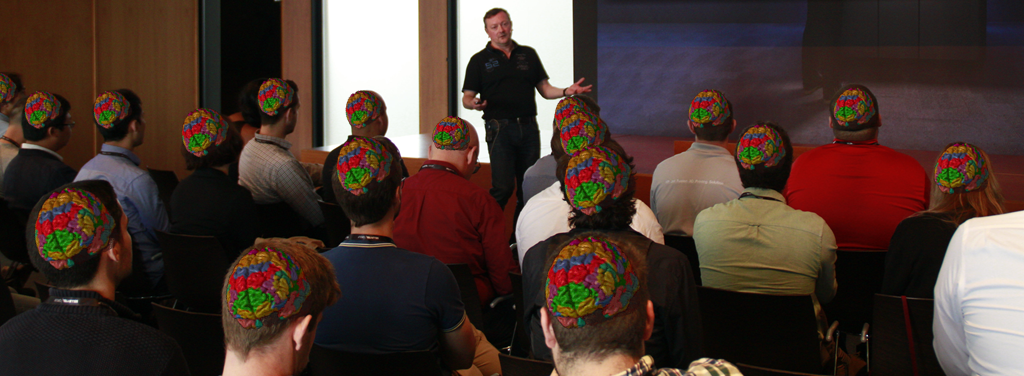
‘- Please, don’t follow me!’ sounds today almost sacrilegious, in a social-media world in which ‘followers’ mean success. Quantity over quality, just to begin.
‘- Please follow yourself …and grow!’ I’d prefer, instead, as leitmotiv to interact with people in a class or training room.
If educators copy social-media ‘tendencies’ (a fashion word there, by the way), we should get naked in front of our students both to reward them (for having followed our session with high attention) or to raise their level of engagement with our stuff, eventually. It seems that lot of ‘influencers’ ‘it-girls or boys’, etc. are choosing this curious way of adding zeros to their followers figures.
The field of immediacy (instant gratification by clicking here and there) and the one of depth (by clicking ‘On’ in our brains’ potential for maximizing their capacities to be the best possible ourselves).
Educators can do a lot for their audiences to activate this ‘On’ voluntarily while enjoying (yes, learning can be gratifying from the initial spark) a shared experience aiming to stimulate their critical thinking, creative thinking, systemic thinking, strategic thinking …to THINK, definitely.
Philosopher José Carlos Ruiz speaks about the current times as ‘the cult of the instant, the priority of the immediate, the hyperactivity not to lose those tendencies that promise us happiness now’. A herd of hurried donkeys running towards the giant carrot would be perhaps too hard as analogy, who knows…
Prof. Dino Salinas (Universitat de València) says, by his part, that ‘something has to get started’ inside a class or training room, what obviously refers to this ‘On’ activation, leaving in the audience conscious or unconscious will of ‘more’ after leaving the room.
CRITICAL THINKING
For people to avoid being part of the ‘donkeys herd’ by building perspective on reality in order to make their responsible choices through careful reflection.
SYSTEMIC THINKING
To get rid of the isolation individuals are getting into (interacting more with their phones than with true humans directly) for growing awareness on how really connected their actions are to others’ reality. True repercussion beyond a ‘Like’ under a post.
STRATEGIC THINKING
To ask themselves ‘Why’ before taking their decisions, and ‘What for’ to verify it’s another brick on their growth building, a new step towards well-identified goals in their life. To analyze circumstances and look for the best possible choice in the end.
CREATIVE THINKING
To improve the search of solutions in order to grow higher, faster, more properly towards the chosen goal(s). Freedom to build the ‘own way’ instead of copying or following others because ‘is trendy’.
From the huge variety of typologies of thoughts I like the precedent ones because of certain complementarity among them, and (mainly) because we educators have many tools to boost their development in our beloved audiences.
Let’s close with some relative tips:
CRITICAL THINKING needs to stimulate REFLECTION in order to COMPREHEND.
To begin, a close approach to the students’ own reality is convenient, followed by analytical focus on their environment and the construction of a conscious + participative link to it.
Analysis of printed or published news could prove useful to ‘scan’ key aspects as possible intentions and goals from the authors/media, true credibility and in what degree, inner solidity through proper nexus between initial premise and conclusions, etc. Also, a comparison between the different lenses of opposing media on the ‘same’ news can put light on the thing.
There’s a difference between being pushed to run in the middle of the flow, and knowing where we want to go (together with where the flow is going).
SYSTEMIC THINKING needs to work on true EMPATHY and VISION of the BIG PICTURE.
To become aware of our belonging to systems since our childhood (family, social class, school, culture, country, company, club, society, mankind, etc.) and respective influence from our specific role is key side of the thing here: sense of responsibility grows together with awareness of the impact our decisions and actions have in other members of every system.
Empathetic approach to others, together with responsible behavior will benefit coexistence in whatever systemic frame, and it can be worked inside the room through role-plays with different roles assigned to each individual on a proposed systemic situation. Causes and consequences of what happened there can be analytically approached afterwards.
So healthy to link empathetically to others instead of just counting how many of them are my ‘friends’ in this or that social network.
STRATEGIC THINKING is mainly about knowing WHAT we want and HOW to ACHIEVE this.
A so much needed start should be, then, to know what we want. Then an open approach to reality will show different alternatives from which it should be useful to choose the ones best adapted to our possibilities, in order to get our goals easier and earlier.
Problem-solving exercises at different levels can contribute to develop the strategic paths, with clear consideration of the context, realistic possibilities, eventual risks and rewards, etc.
A wide, long-term vision is priority number 1 for strategists, what puts the thing aside from closed, instant surface reactions (typical of the social media high-speed rhythms).
CREATIVE THINKING allows us to FIND NEW solutions to reality, or even to create NEW REALITY, even if sounding pretentious.
Key side of mankind evolution, creativity uses divergent ways (proposal of several possibilities) to solve existing problems or challenges. Originality, flexibility and fluidity are the 3 pillars on which the process will be relying. An open, creative mind will be capable of improvisation when needed, and of finding alternatives to break barriers.
Brainstorming types of activities can work inside a class or training room, always properly managed and led by the educator as facilitator, following some necessary rules, as i.e. initial work on people’s trust for saying theirs with confidence, complete freedom of proposals for putting the logical filter only afterwards (whenever every suggestion has been expressed), etc.
Awareness about our capacity to create is necessary, and sometimes the worst barrier is an inner voice (always wrong) telling us ‘we are not creative’. Again, openness and flexibility should be all of the time ingredients for the creative person, that will rely a lot on the own capacity to find the path, instead of always following others.
SOCIAL MEDIA are, independently from what kind of relationship we have with them, full of potential for everybody to prove useful to their society. Let’s leave this so clearly stated.
Another story is HOW we decide to use them, to interact with (and through) them, etc. Well used, they can prove key side of an educative strategy that looks for people growth!
Educators, trainers, professors, teachers …can definitely be huge INFLUENCERS in their audiences’ growth based on dignity, humanity, respect, and other values.
Our simple talk on any topic will always provoke real-time modifications in the students’ neuronal tissues …we modify their brains! Perhaps it looks impressive as instant reply, even if in the long term, we can also have huge influence in fostering peoples’ independence of criteria, critical perspective, mature sense of responsibility, solid growth capacity, etc.
And, best of all, we don’t have to get naked for this 🙂
‘Till the next one!
B (Sr)
‘TEACHING‘? …IT’S ABOUT ‘LEARNING’!
(WHERE THE WEIGHT SHOULD BE IN CONSTRUCTIVE EDUCATION)

Verbal and Linguistic intelligence, Mathematical and Logical intelligence, Visual and Spacial intelligence, Bodily-Kinesthetic intelligence, Musical intelligence, Interpersonal intelligence, Intrapersonal intelligence, Naturalistic intelligence, Existential intelligence.
And education systems put normally emphasis ONLY in Mathematics and Literacy!
Dr. Howard Gardner’s research on multiplicity of types of intelligence (the nine that open this article at the moment, even if it seems to be an ‘ongoing’ process of discovery) call for our attention, dear educators of the world. Are we really working for this diversity?
Or we’re still anchored by inertia in the traditional, rationalistic concept about intelligence being our students’ ability to reason, plan, solve problems, think abstractly, comprehend complex ideas, and so on?
David Kolb did a lot about the necessary diversity in education offer by identifying four different learning styles in people, based on preferences respect to ‘choices’ in two parallel ‘axes’: the Feeling-Thinking (perception), and the Doing-Watching (process of experience) ones.
So, if you prefer to Feel (concrete experience) and Watch (reflective observation) your favorite style is the Diverging one. If, instead, you Think (abstract conceptualization) and Watch, Assimilating is your style. In case of you preferring to Think and Do (active experimentation) afterwards, your style is the Converging one. Finally, if you normally Feel and Do, it’s about the Accomodating style of learning.
Again, do we have teaching reply for this diversity?
As ‘reality’ is about perceptions, let’s also remember Dr. Robert Dilts research (together with other relevant personalities in NLP ones) regarding representational systems of perception in human beings or, in other words, what favorite sense channels we use to link with the universe around (a training session or university class included).
As an average, it seems that 70% of our students are mainly visual perceivers of reality, what means they use more both vision (external sense) and visualization (internal process through our inner representational systems) than the resting ways of connection.
Another 20% rather prefers the auditory channels (both to listen externally or to internally sonorize) in order to build their version of reality.
And the resting 10% belongs to the complex kinesthetic (introspective) type of perceivers, half of them being emotionally introspective (process through sensations, feelings, emotions) with the other half aiming to the rational process of information (inner dialog + logical reflection).
Nice news for teachers, trainers and professors is that with proper audio-visual stuff we have 90% of public in our pockets 🙂 Then we’ll do our best to ‘reach’ the introspective ones.
Only if we care about (again) this evident diversity in our audiences.
Benjamin Bloom and his well known ‘taxonomy’ speak about progressive, growing levels of mastery of knowledge through a path that goes from knowledge level (capacity to remember and repeat data and information) to evaluation one (judgement on material and methods respect to the learning unit’s purposes).
In the meanwhile, we can find these other four levels: comprehension (knowing what is being communicated + explaining relationship between different data), application (higher quantity of elements than previous level + use of abstractions in concrete situations), analysis (decomposition of a given problem into its constitutive parts + discovery of relationship between them), and synthesis (to form a meaningful whole with initial parts or elements that were disperse).
I bet on majority of education professionals being aware of this diversity, and testing it permanently for moving learning experiences forward always the best possible way.
In the scientific world, in the academic one, and in others with similar characteristics, we usually find lot of examples of egos looking for recognition to own brilliancy and capacity. Wanting to look as almost unreachable sources of light and impressive knowledge. Good.
Precisely because of this should be necessary to remember that our didactic task is a service task mainly. We are there because of them.
IT’S ABOUT LEARNING.
Also for newcomers in the education field that can probably feel nervous, anxious or doubtful about their capacity to run a class or session. Please remember: it’s about them!
Whole focus on our audiences, then, and we’ll forget about ourselves (if we are there, is because we deserve to be there) by putting full attention in our people: who they are, how they are, what they need. Relief to ourselves + better service to them. Good business!
Hope this can prove useful, and leave you in peace now, ‘cause I have to prepare myself to look brilliant to my next students, er… I have to work hard in preparing the best possible experience for them, the best adapted to their needs and wants. The one approaching them the most to their goals.
That’s it! ‘Till the next time.
B (Sr)
MEMORIES OF THE FUTURE
(HOW UNIVERSITY EVOLVES FOR THE COMING TIMES)
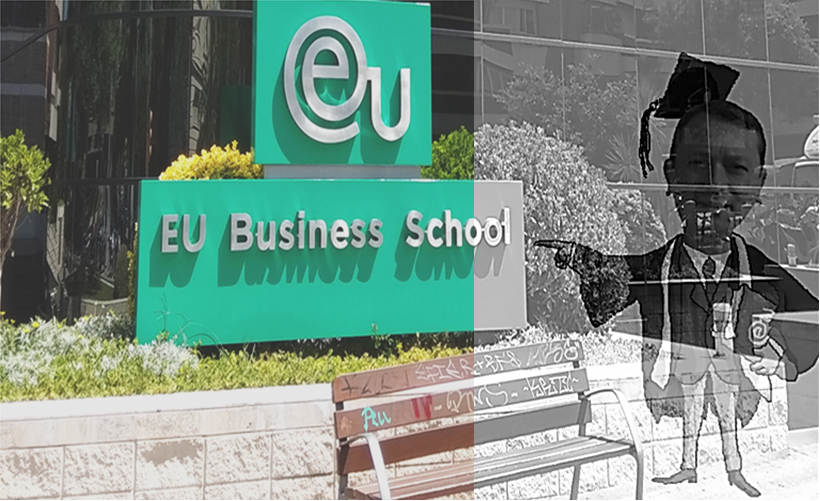
‘Pandidakterion’, the Constantinople university created by the year 340 B.C., is perhaps the first example of what we consider ‘a university’ today. How can it be defined, b.t.w.?
Etimologically, ‘Pandidakterion’ sounds like the sum of ‘Pan’ (from Greek παν : everything), ‘Didaskein’ (again Greek, διδάσκειν : to teach), and ‘Tekne’ (of course, also Greek tékʰnɛ : art), what would be resulting in: ‘The Art of Teaching Everything’ 🙂 This coincides with the ‘Pan’ meaning of ‘Vniversitas’ itself (the universe, the whole), first assigned to the one of Bologna in the 14th century.
In medieval times the magistrȯrum (Latin for professors) and schȯlarum (Latin too: academics) were communities or guilds around which several university institutions begun to take shape.
Until here, the ‘MEMORIES’. Now let’s touch ‘THE FUTURE’ to complete the main subject’s stuff:
First thing on it should be to highlight its unpredictability, as Sir Ken Robinson clearly remarks in his brilliant talks about education, creativity, and some other marvelous ingredients of the human growth recipe.
The ever growing diversity and specialization we live today in practically every field of our existence is producing a consequent variety of high level studies offer in myriad of forms. From the millennial institutions (Bologna itself, Qarawiyyinn in Morocco, Oxford, Córdoba, Paris, etc.) to the ‘Disney University’ that offers a ‘Ducktorate Degree’ 🙂 and is (of course) more a global training program for the company’s employees than an orthodox ‘university’.
Same happens with the ‘Invisible University’ (tribute to the Palo Alto one, so inspiring in terms of creating knowledge) that we developed for the SELLBYTEL/OMNICOM Group, as an organized body of seven career plans with three different levels each, all of this adapted to the company needs.
One thing is granted: almost whatever thing we want to do in life counts on respective path of development until highest levels (in big majority of cases under the umbrella of a university degree, or so).
Another thing is evident: some good universities are the place where to research for building the future mankind will live in. The point is: what is the universities’ future?
Prof. Dr. Anke Hanft (scientific director in C3L University) visualizes future academic teaching and continuing education as necessarily individualized and online-based, as a way to adapt to the evidence of the increasing heterogeneity of the student body over the world.
Prof. Subhash Kak (electric and computer engineering in Oklahoma University) adds the point of preparation for a technology-enabled future in order for universities to upgrade adaption to coming needs, as they’re now mainly worried about competition from schools or training systems using online learning technology (what is good) instead of more focus on how automation and artificial intelligence technologies are rapidly transforming manufacturing, corporate work, business, etc.
Prof. Zahir Irani (dean at University of Bradford) puts the emphasis on the need of becoming more interdisciplinary, as current universities are still caught by so traditional departmental structures that prevent research and education from evolving.
Harry Tenant humorously says that today ‘moving a university is like moving a cemetery: you can’t expect any help from the inhabitants’ 🙂 while aiming also towards a huge virtualization that will end with our whole universities in the cloud, claiming for current times as ‘the end of the university as we know it’.
Finally, researchers like Henry Etzkowitz, Andrew Webster, or Christiane Gebhardt speak about the university evolution towards the future from ‘ivory tower’ to ‘entrepreneurial paradigm’, explaining the enhanced role in technological innovation that universities begin to play in this emerging new paradigm, precisely. Going deeper, they say that this academic transition as an economic development strategy (encouraged by Governments) changes the relationship between knowledge producers and users, being a global phenomenon with an isomorphic developmental path.
And I was just reflecting on how future should always prove better than past if we really evolve, while visiting the former main building (still in use) of the European University in Ganduxer street, Barcelona, where I was involved in some academic areas a long decade ago. I met later on some of my students of this time in big companies, where they always demonstrated the solid preparation received during their years in this institution.
And the EU is also growing, changing and evolving (new buildings, higher structure, even better quality of academic offer, etc.).
‘- Am I prepared for the university of the future?’ asked myself during my reflection. ‘- Doing my best’ was the (perhaps first-reaction) reply.
Great Albert Einstein said once (one from several quotes attributed to him, in this case a real one 🙂) that ‘It is the supreme art of the teacher to awaken joy in creative expression and knowledge’, and I have always tried to remember key points of this thought while taking academic, or training roles in general.
Let’s hope that in the university of the future both joy and creativity co-exist with knowledge …for our future students to keep as ‘awake’ as possible! 🙂
And, mainly, let’s hope that every involved actor in the overall thing remembers Protagoras: ‘phantom hristos metron Anthropos neiei’→ Man is the unit for everything, then: university should be built always around the human being, and for its benefit as the final goal.
‘Til the next one.
B (Sr)
ORGANIZATIONAL KNOWLEDGE DEVELOPMENT
‘Intangible’ is, like knowledge, what exists even without palpable physical form, and can generate effects in this existence’s context (an organization, for instance).

When Ikujiro Nonaka and Hirotaka Takeuchi tell about ‘tacit knowledge’ and ‘explicit knowledge’ as factors of organizational development that work in spiral (internalized and externalized knowledge flows that come from the individual to enrich the organization) they are convinced about the need of an explicit will (from the organization) of caring and developing its knowledge with dignity, for granting goals as i.e. enduring benefits→ their mission as social entities. Without this intention, the system would remain just an archetype, a structure without true meaning.
Thus, innovation and competitive advantages arise from clear will of stimulating the intellectual and creative capacity in the organization members, who favor (by social interaction within the workplace) the dynamics of both tacit and explicit knowledge until materialization in products, services and systems of success.
According to these authors, in addition, a key for Japanese business success is permeability and opennes towards environment knowledge (from suppliers, customers, distributors, competitors…) that is intentionally ‘imported’ until getting integrated in the own corporative identity, from which is being regenerated in innovative + creative way for turning back to the environment afterwards in the form of new products or services, already mentioned in the previous paragraph.
The so called ‘fluctuation and creative chaos’ phase is, within the structural complexity of these processes, the one that stimulates the relationship between the organization members and the environment, with the consequent break of patterns, habits, and usual states (by facing evident differences with those found outside) and the linked opportunity for creative reflection and proposal of change.
KNOWLEDGE AND ITS PRODUCTIVE MANAGEMENT
The growing importance of knowledge as a driving factor for production has spurred interest of companies and organizations of the knowledge society (precisely) in its strategic management.
Dr. David Rodríguez (Universitat Autònoma de Barcelona) highlights the convenience of Knowledge Management for key aspects such as the capture and promotion of good practices, retention of staff knowledge, promotion of organizational training and learning, improvement in users and clients’ satisfaction, increase of benefits, development of competitive intelligence, etc.
Thus, from the organizational will to work on the development of knowledge and also having valid tools and strategies for its management and profit, it is important to verify that the appropriate conditions are offered for the ‘mechanism’ to work, that is: freedom and dignity of each member to feel useful protagonist both in the externalization (projection of their tacit knowledge towards the organization, making it explicit) and in the internalization (assimilation of organizational knowledge from the learning and experience of others, to incorporate it into the base of own knowledge).
The values linked to the knowledge management strategy are fundamental, both social and economic values, which together will make possible greater survival of the organization respect to mechanistic visions only linked to productivity without further ado.
Amrit Tiwana, a follower of Thomas Davenport and his contributions in the management of knowledge for business, attaches great strategic importance to the design capacity of organizational resources (departments, qualified personnel, etc.) for the strategic management architecture and the integration of existing infrastructure (practical point of view), which invites us to highlight this sector with special emphasis:
Who will be responsible for the delicate task of promoting growth and success of the organization from the effective management of the complexity of factors inherent in the creation, administration and profitable use of knowledge?
The assumption and recognition of the essential corporate values as a starting point will surely precede a careful exercise of permanent communication between the organization leaders and those in charge of knowledge management, to later verify that all the human group that composes this organization ‘beats’ harmonically promoting the whole in a homogeneous and dynamic way, creating, incorporating, modifying, optimizing and proposing useful knowledge to achieve the common goals.
AT THE LABORATORY…
The administration of training and learning knowledge gets key specific importance, and will depend on respective departments within the general organization (usually HR, or directly Training in some cases).
Its role in the creation of knowledge, respective strategic analysis and professional support to operations in real time and permanently adapted to the needs and circumstances of the current changing competitive world is of obvious importance.
Thus, the ‘knowledge about knowledge’ applied there will directly affect the remaining areas of the organization, as beneficiaries of the effects of each training action. The biology of learning, or its neurology, together with the educational contributions of specialists in various related fields (the list would be endless, although I would like to mention Howard Gardner→intelligence, Rosa Sensat→learning, Humberto Maturana→biology, James McGough→neurology, Donald Kirkpatrick→evaluation, David Kolb→adaptation or Daniel Kahneman→mental biases, among others) together with the practical lens of immediate application in context, will be decisive factors in a good part of the organization’s knowledge management success.
Internal and external communication, also normally managed by specific areas or departments, will prove strategically important in the dynamics of knowledge flows (internalizing or externalizing, tacit or explicit, strategic, practical, human, technical, etc.) that will determine the future of good part of the organization’s success.
‘Til next time!
B (Sr)
TRAINING EVALUATION
The other day, talking to a colleague in the SELLBYTEL Group, we were agreeing on how strategically important it is to boost a company’s growth through well directed training. The point is: WHAT kind/type of trainer and session is the most appropriate in any case?
From my part, this is what I have always taken into account in order to assess both Trainers and Training sessions:
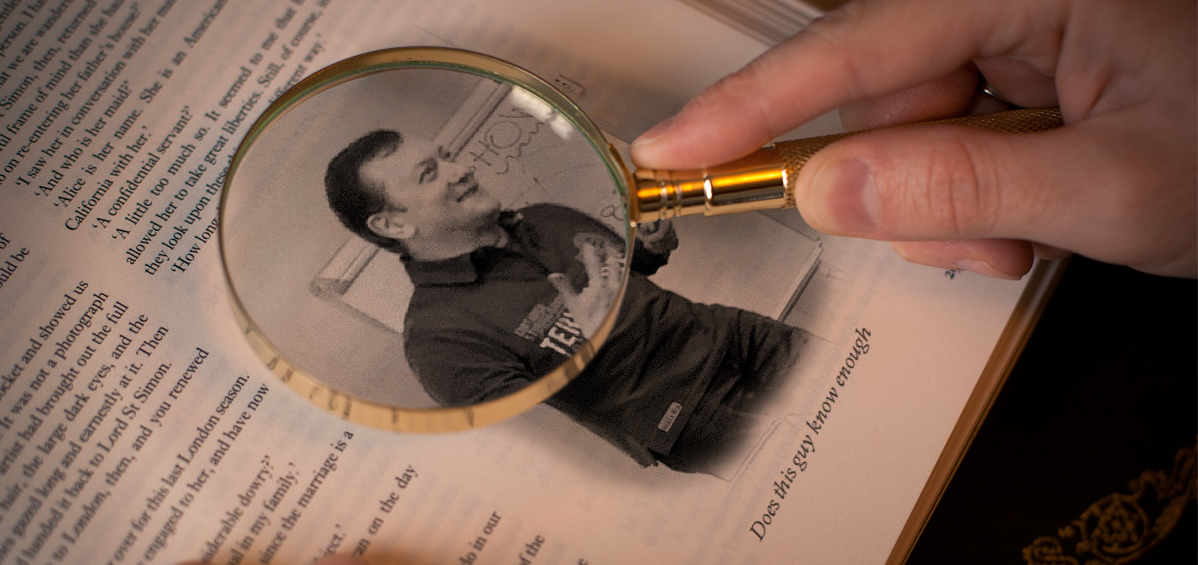
To evaluate a Trainer, Teacher, Professor, or so, we can begin by 3 key topics regarding goals, active involvement, and checking.
a) Permanent attention to goals to be achieved, aiming everything happening during the session to the respective concretion, including the unexpected things.
b) Fostering active participation from audience, in order to build a useful + entertaining learning dynamism in which every participant feels involved because of ‘building’ the experience through their contributions.
c) Effective checking (verification) about main subject/topics having been assimilated and retained by the attendees, what grants further application when needed.
Their didactic use of humor, metaphors, or questions (to reflect, motivate, check involvement or knowledge from audience, etc.) will always add positive stuff when included into the evaluation.
Finally, more generic aspects as i.e. how the Trainer creates ‘atmosphere’, their character and interactive style, or the kind of attention to public and learning process in real time will round a deep + accurate assessment in the end.
On the other hand, and regarding Sessions themselves, we normally pay attention to:
a) Session being balanced and homogeneous as a whole, following in addition an easy-to-assimilate progression that fosters comprehension.
b) For it to be clear (main points being evident, and easy to understand) + entertaining (proper inner dynamism) at the same time.
c) Should be always useful to the audience’s interests and goals, what means: for them to grow or to improve the key topics to master and apply after the session.
Better if the experience itself starts something in every attendee (as the spark produces fire), in order for them to get out the room wanting to go for more.
From the practical side, good if oral + audiovisual + graphic (+ etc. 🙂) communication of the main points is effective enough for people to understand them quickly and easily.
And of course, being the orthodox definition of ‘Training’ as simple as ‘sharing knowledge’, this (Knowledge) becomes main aspect to be evaluated in the overall thing.
‘Till the next one!
B (Sr)
KNOWLEDGE DEVELOPMENT
Our core activity since decades, the creation of didactic units (courses, impact modules, seminars, didactic areas or programs, strategic improvement, etc.) remains, at least to us at bf©, a fascinating process that involves many aspects in order for the product to prove entertaining, and useful at the same time.

A didactic need is, as in every divergent process, the initial spark to start managing ideas that should be creative enough to propose something new, and logical enough to prove useful+understandable by big majority of targeted public in their true student or professional life.
Once a set of ideas comes to our minds, the natural selection process (similar to the one happening in a ‘brainstorming’ exercise) filters them all to leave on the table only the most fruitful, applicable ones.
The ‘how’ enters then into action: we need to arm the didactic unit in a way that grants progressive assimilation in fresh, interesting, entertaining way, in order to motivate public to really want to learn.
Finally, the true arena to test the thing will be the learning experience inside a training room, varying the level and kind of exigence always depending on the goals to be achieved and, mainly, the public itself.
For knowledge developers, the fact that every ‘first time’ is the checking time remains being a reality that normally remembers about the scientific method: trial and error before definitive achievement. So: the second time is normally the best one 🙂
In our professional career, the influence of people like the nuclear physicist and teacher Jaume Jorba i Bisbal proved kind of a turning point, by adding rigor to the creative process in general.
Better structured afterwards, our path of action follows his adviced four steps: Epistemological (knowledge itself, including trusted sources + authors, etc.), Sociological (focus on public and their goals to be achieved through our didactic unit), Psychological (our favorite one: the ‘how’ or way of managing the unit together with the audience for their maximum profit), and Didactic (practical approach to the thing from previous contact, consultation, etc., with colleagues or institutions having worked in similar subjects/areas before, in order to ask for their advice and useful comments).
What is needed in every phase of development? Good information about best authors and sources that can be compatible or, by the contrary, useful to start enriching debates … certainty on the main goals from the public, what is to say: what will be expected from them after having attended our creation … ability to build a dynamic, progressive, entertaining experience for them inside the room, while granting maximum learning level (this means knowledge about the learning process in human beings, some traits of audiovisual design and syntax of the visual image, etc.) … and good contacts in order to check together with them our product before starting up with the first delivery in front of the public.
In other words, a fantastic class or session that leaves attendees wowed is rarely product of casual alignment of stars in the sky, but the final result of a huge set of previous linked actions aiming to produce solidity (rational profit) in appealing way (emotional atmosphere).
Hope you liked! Next time we’ll touch the (perhaps bit more complex) Organizational Knowledge Development, a key side of best companies’ inner volcano of success in their respective markets.
‘Till the next one.
B (Sr)
‘F.U.N.’ TRAINING
Fertile: capable of generating useful knowledge for the trainees.
Understandable: with capacity to clearly express meaning + usefulness of every topic.
Nice: able to provoke a pleasant, confident atmosphere where to grow by learning.
Yes, definitely, a trainer should be FUN if wanting to succeed. Albert Einstein said that the main responsibility for every teacher is to ‘shake’ knowledge in the room, for people there to get truly interested, and motivated to learn.
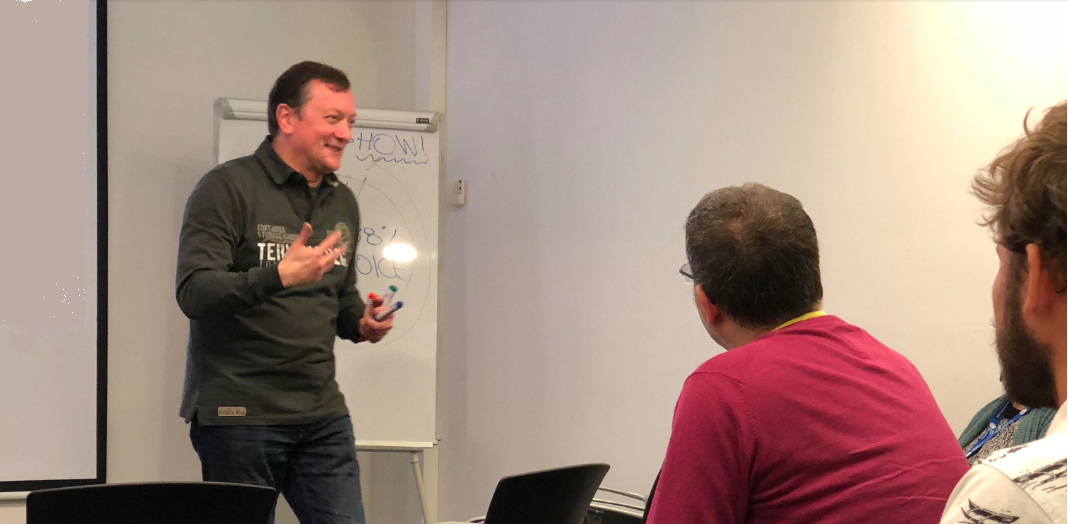
Fertile in the capacity to manage genetic ideas on how to cope with a future didactic unit (class, session, seminar, course, program, etc.), and to filter them until keeping the best, most useful ones.
Understandable in the way of canalizing these ideas into an easy-to-assimilate and to-follow path, that will take into account human learning process (rhythm, progression, level of complexity, etc.).
Nice from the huge need of bringing positive energy for fruitful interaction (active participation from audience, please!) in the room. Humor, use of key metaphors, story-telling, etc. are usual factors for success.
If learning is ‘a change of behavior thanks to experience’ (orthodox definition), let’s build the FUNniest experience possible for them 🙂
B(Sr)
DMA · DIDACTIC MENTAL ANCHORING TECHNIQUE© (ADVANCED TRAINING SKILLS)
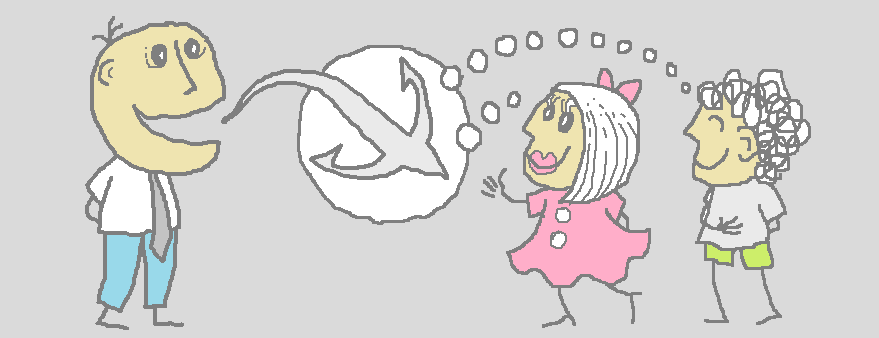
From NLP (NeuroLinguistic Programming) we learn about the huge effectiveness of Mental Anchors to find relief against negative experiences or other blocking factors that limit our wellness, freedom, etc., in case of wanting to implement them for these purposes! → We’ve always insisted in this therapeutic possibility as a powerful ally for Coaches, i.e.
By association of spaces, ideas, memories, or sensorial stimuli linked to our behavior, emotions, or feelings we have created this phenomenon that acts as a bias in which the mind stays focused on only one simplified reference point. Some Mental Anchors tend to perpetuate, thus affecting permanently our ‘way of’. And big majority of them are subconsciously created, then: almost impossible to detect (and cure, if prejudicial to ourselves) consciously.
On the other hand: Positive Anchors can start always good stuff (confidence, positive attitude, will of growth, etc.).
Can they be an ally also to the Trainer?
LET’S WORK FOR CREATING THEM CONSCIOUSLY (IN A TRAINING SESSION, I.E.) FOR OTHERS TO GET BENEFITED BY THIS FANTASTIC ‘LEARNING BOOSTER’:
I suggest:
a) To provoke an EMOTION in the audience (i.e. a pleasant sensation, a surprising opportunity to get better, etc.).
b) To suggest a RATIONAL benefit they will engage with.
c) To CREATE the ANCHOR through a pattern of behavior (linked actions) that will influence their perception in positive way: helping them to (unconsciously) assimilate in well prioritized way (thus easing the task of comprehension itself), inserting deeper key thoughts or ideas, etc.
EXAMPLE:
In a Communication course for beginners, I want to highlight 3 aspects (‘pillars’) from the whole session program: 1) The Power of Questions, to better receive. 2) The application of the Persuasive Triangle(*), to better emit. 3) The modern formula for Persuasion, to lead own interactions every time.
CREATION OF THE ANCHOR…
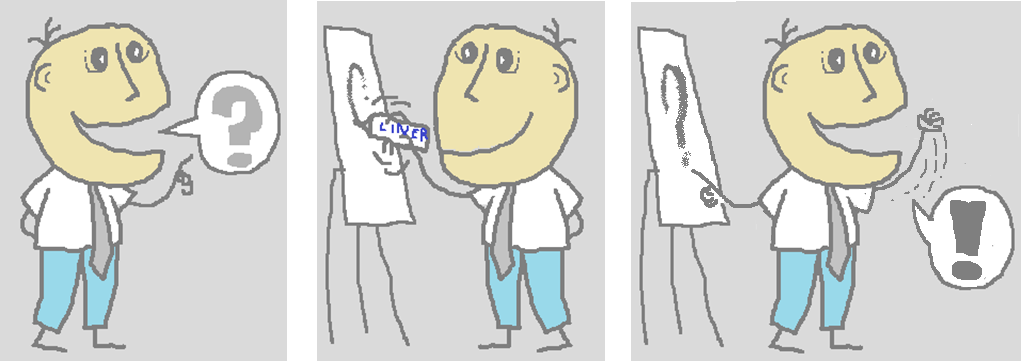
a) (EMOTION) I tell a joke for the audience to laugh (and lower inner –normal- defensive barriers) + cover them through friendly eye-contact (warmth, integration).
b) (RATIONAL BENEFIT) I remember them that we all came there to grow, to be stronger (what is also a persuasive suggestion, as perhaps some of them came there for different reasons that they tend to forget or put a bit aside while listening my message).
c) (PATTERN) I begin creating high expectation through ‘mystery’:
‘- If what comes now is the only thing you’ll remember from today, for me it’s OK!’
I draw, in silence, a big question mark on the board (visual perception, impact).
I look at them while pointing the drawing with my finger, and orally reveal the mystery –solution:
‘- In any human interaction, who makes the question, has the power’ (I raise my other hand fist up while pronouncing the last words).
The created pattern relies on the following set of actions:
c1) Oral creation of expectation (through mystery on what comes next).
c2) Silence + drawing something attached to the coming solution still ignored by them.
c3) Oral exposition of the solution (key idea or concept to insert in their minds) + Physical gesture, movement, action, to add eloquence to key (oral) emission.
After having solved this way the key-idea 1 (Power of Questions, in our case), we just repeat the pattern for the following ones, and their brains will be instantly keeping these new key points in the same ‘folder’ of so-important-things-to-remember, together with the initial idea.
This way, the Trainer is doing more than (just) emitting: is also influencing positively the reception, thus taking the whole communication cycle under control, for the public benefit.
Try this and tell us how it goes 🙂
‘Til the next one!
(*) Persuasive Triangle: emission in Positive, Certain, and Simple way→ more info in ‘COMMUNICATION = SUCCESS’ (from Bernardo Facta)
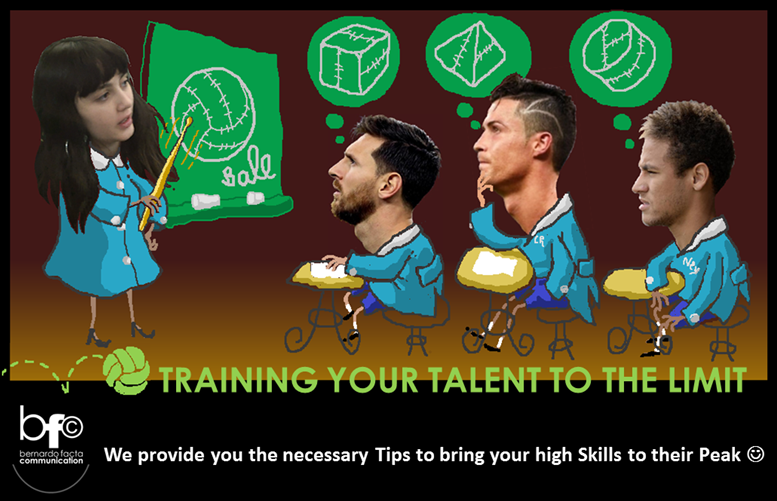
CONTACT US IF INTERESTED IN TRAINING AND GROWTH!

